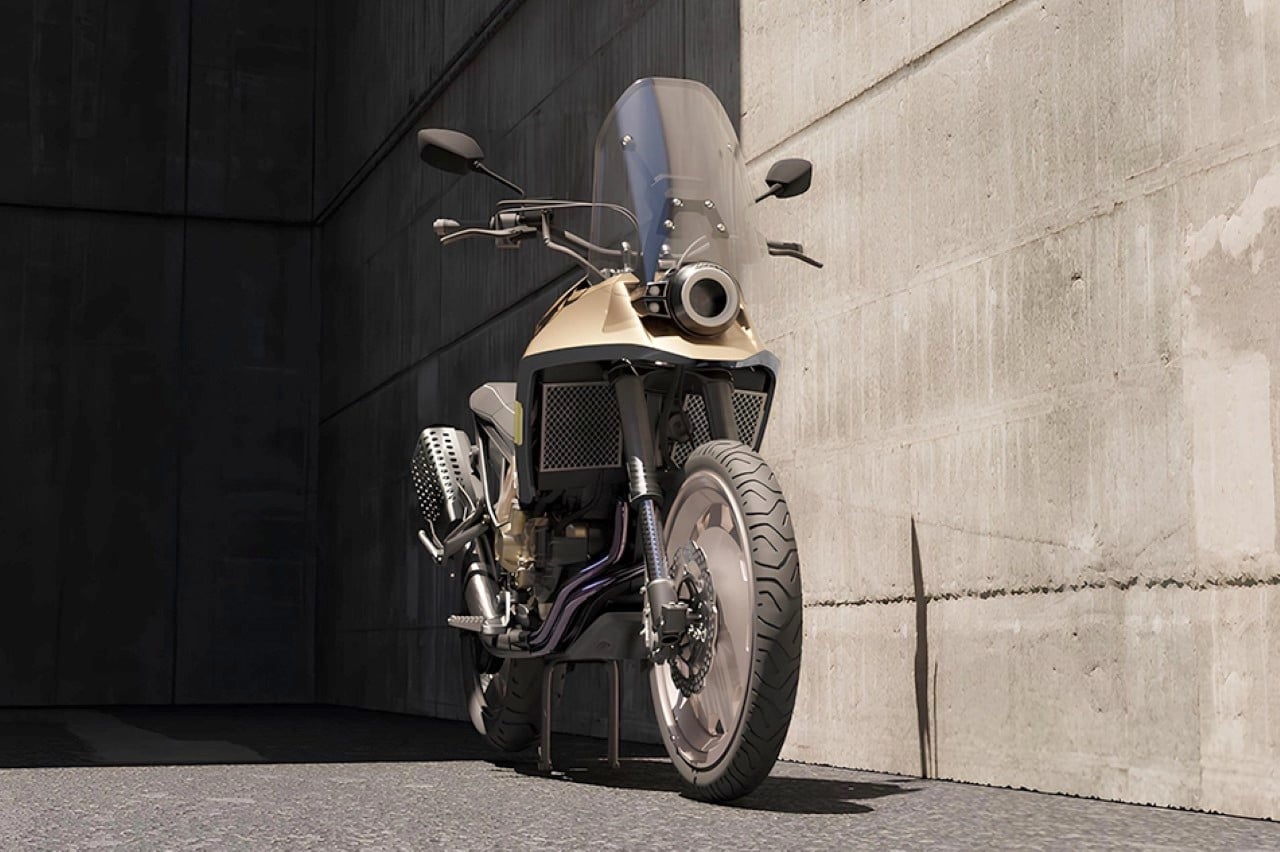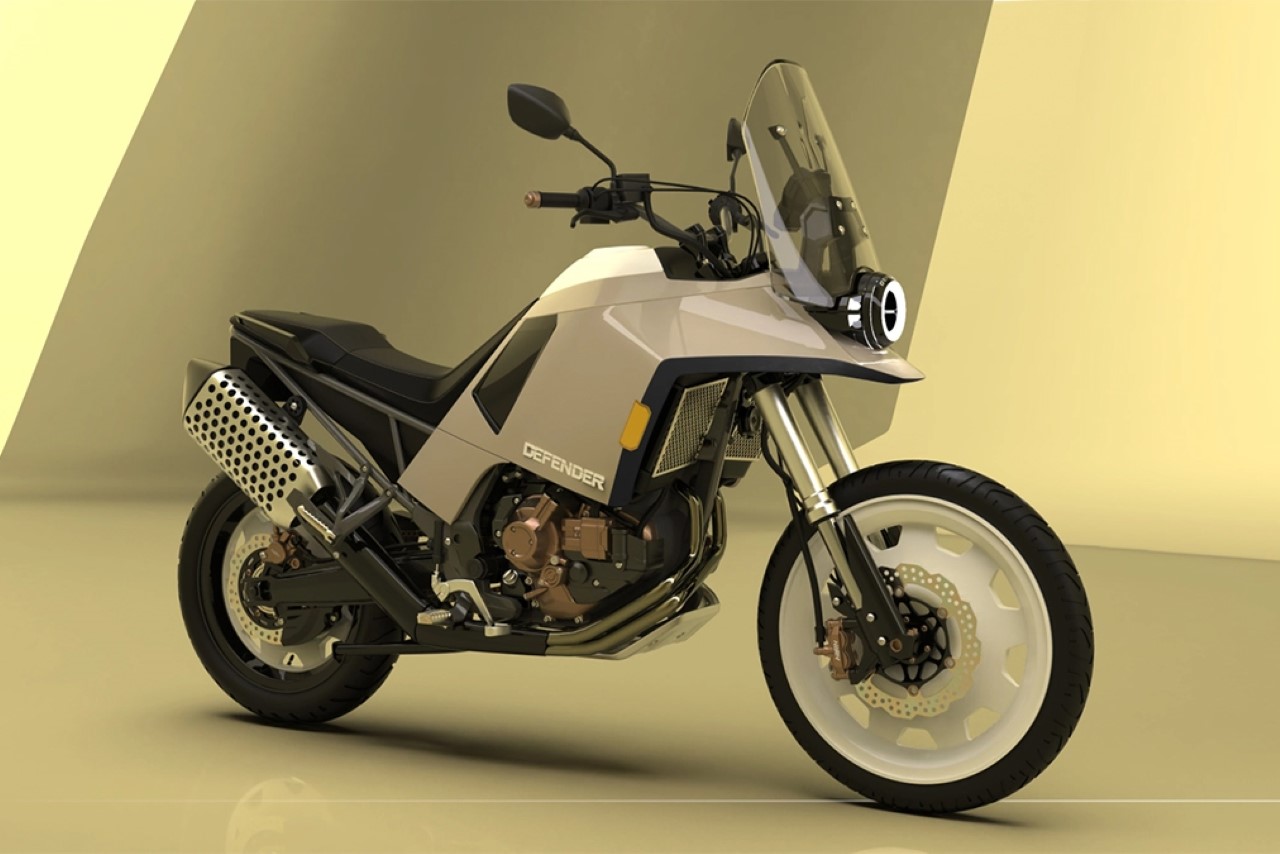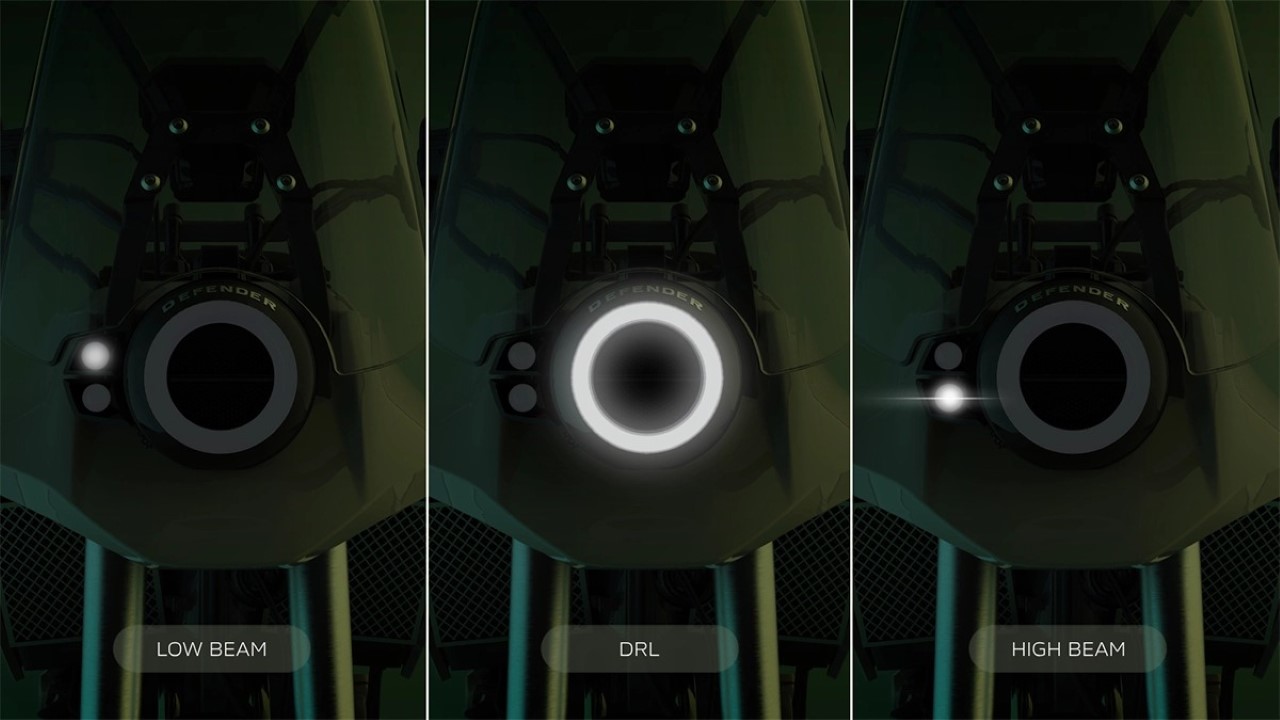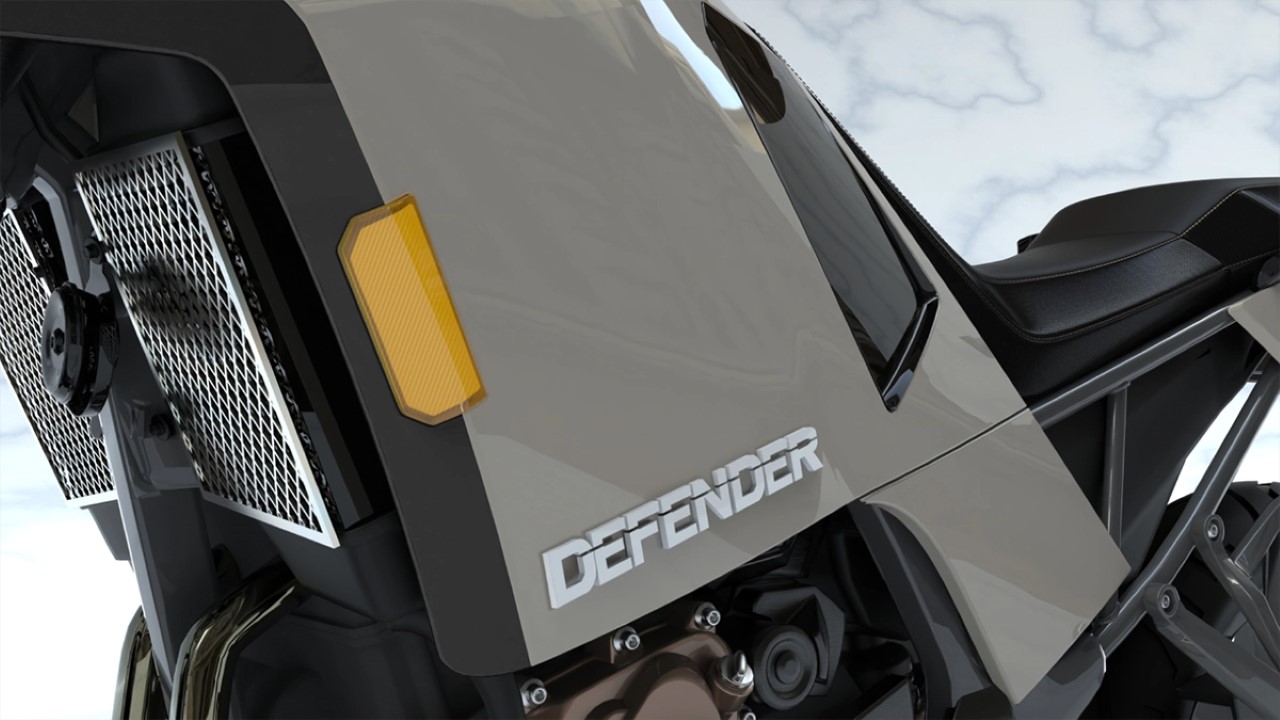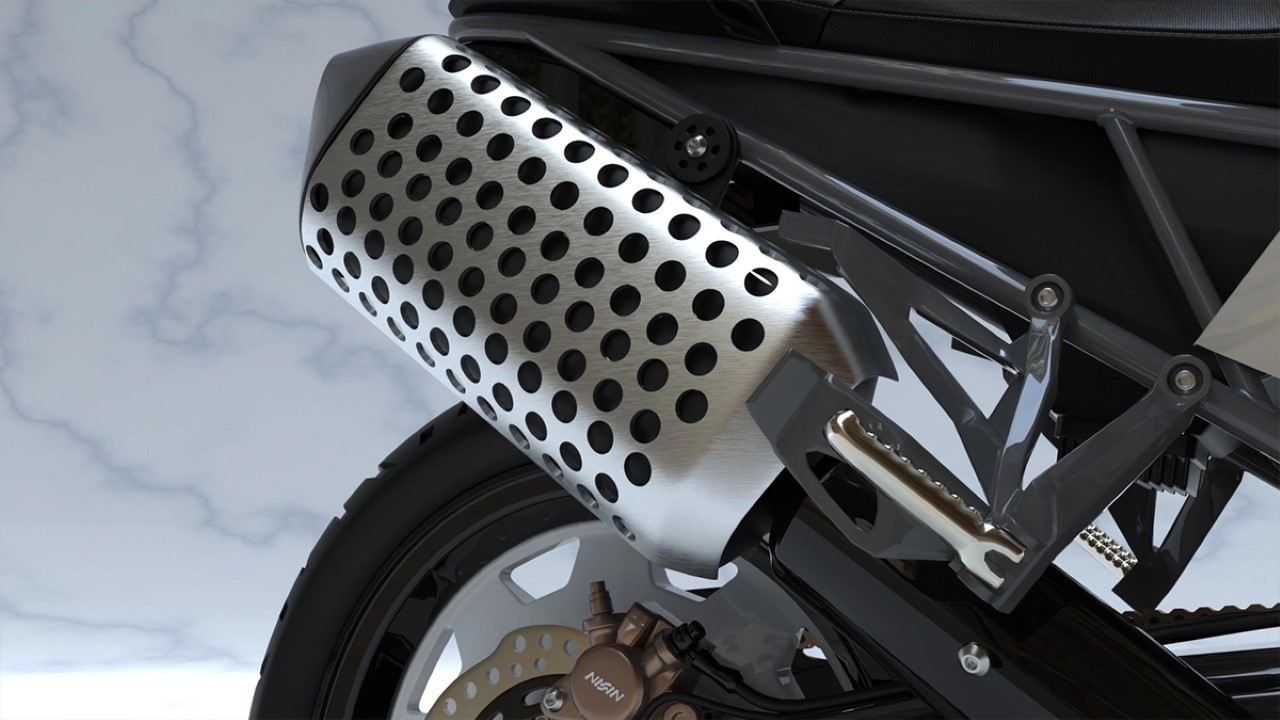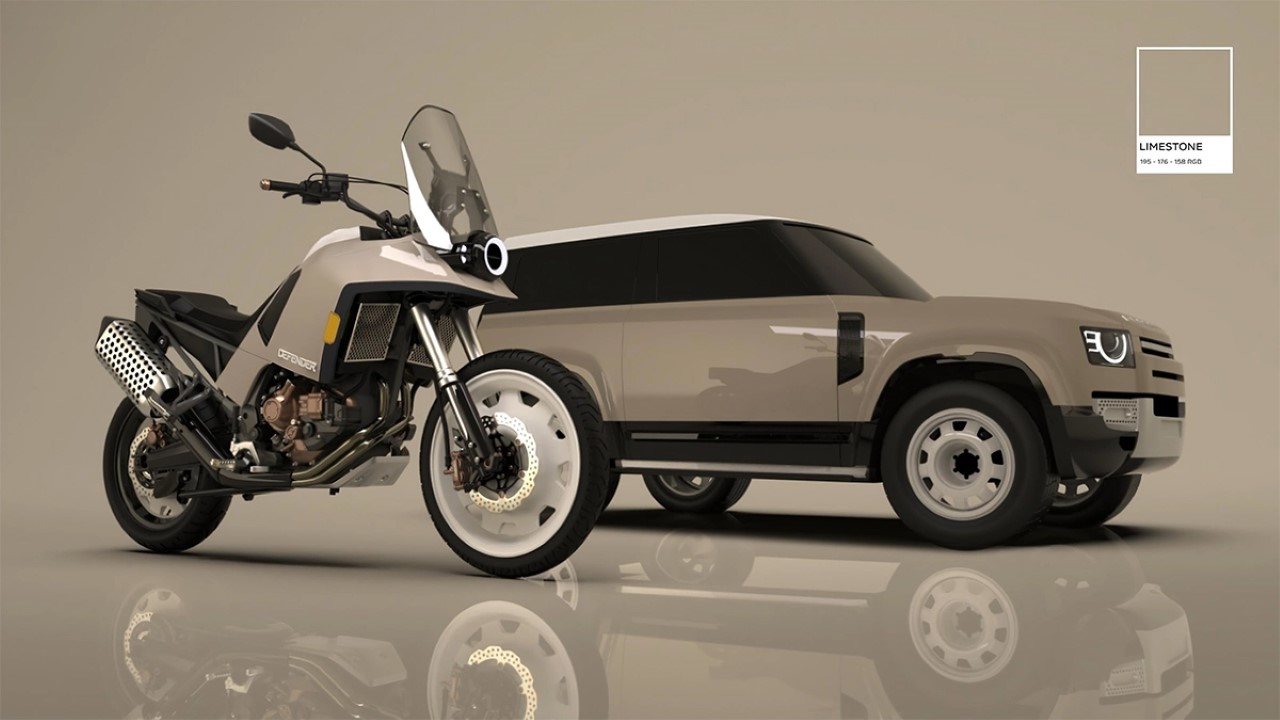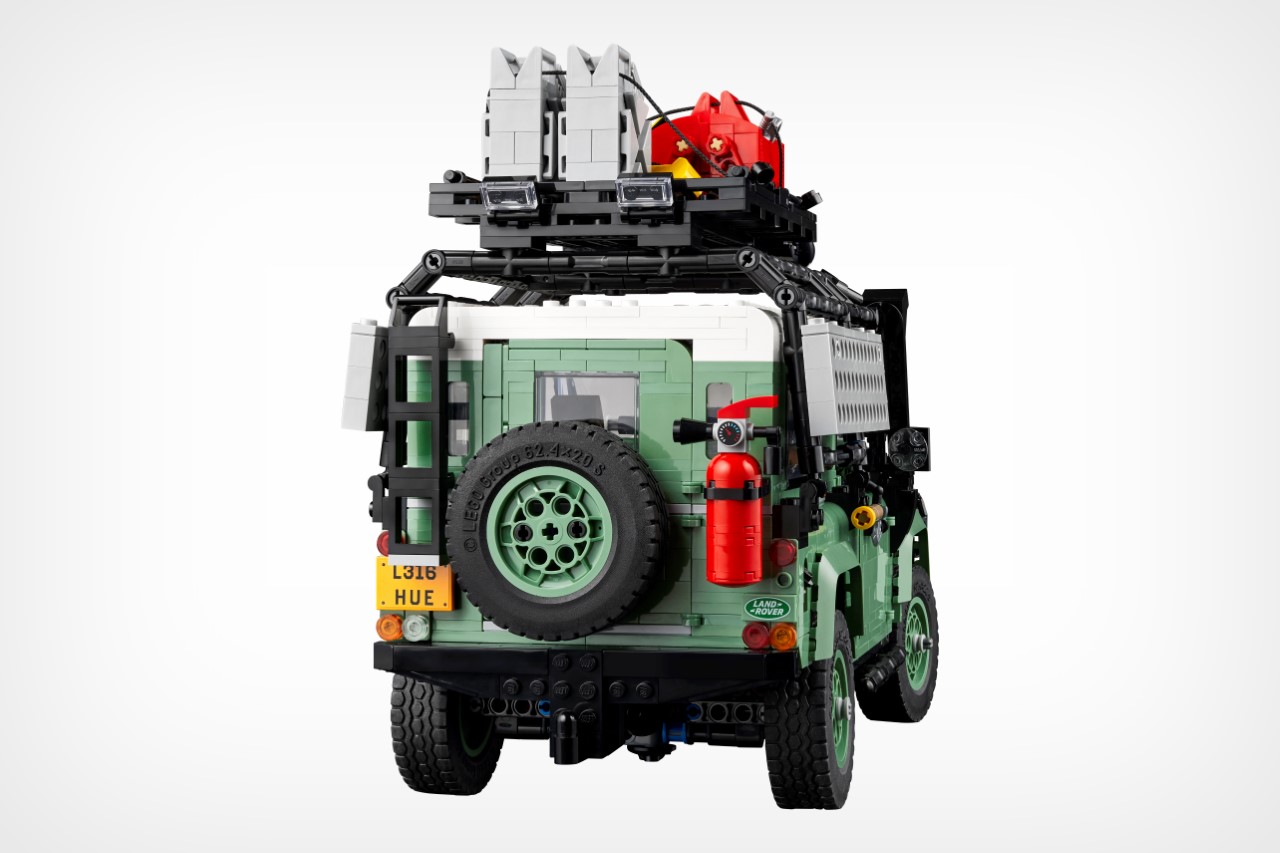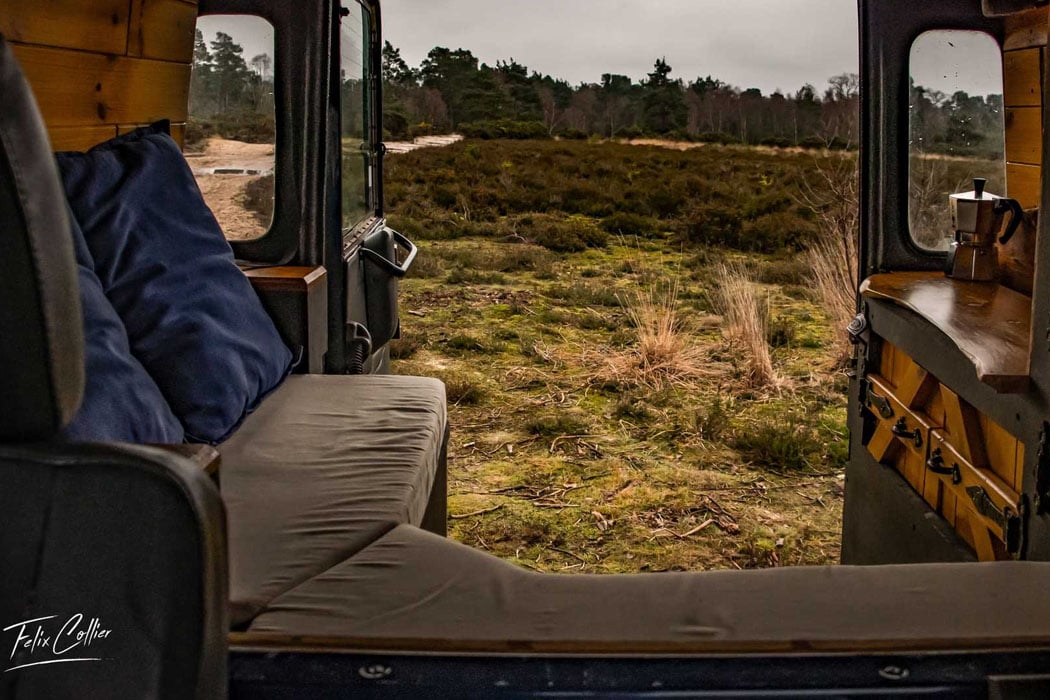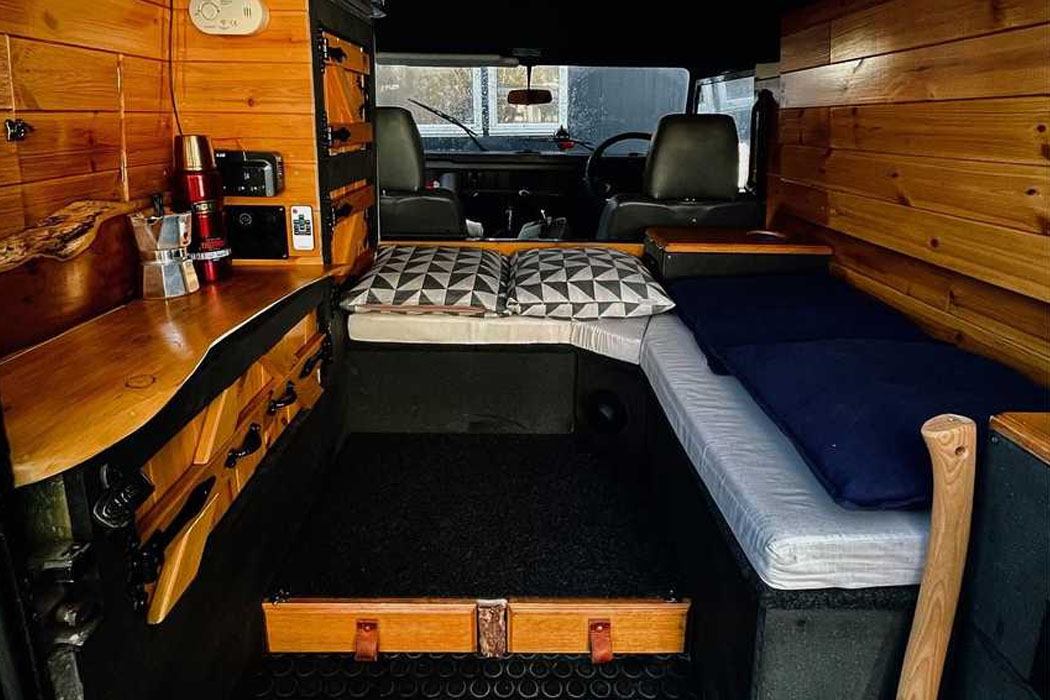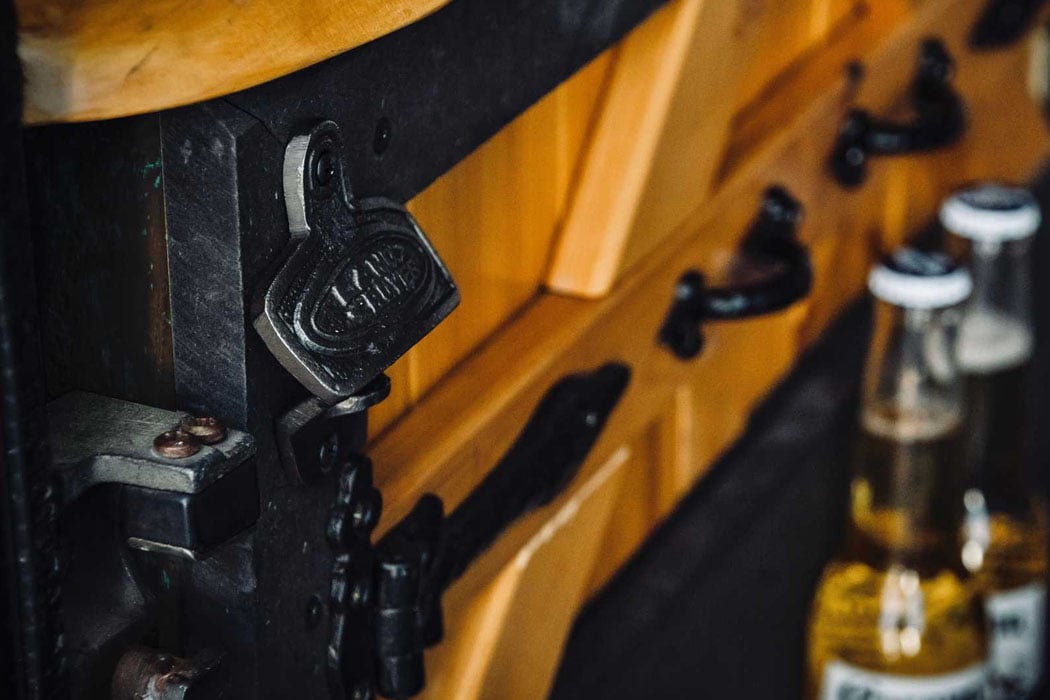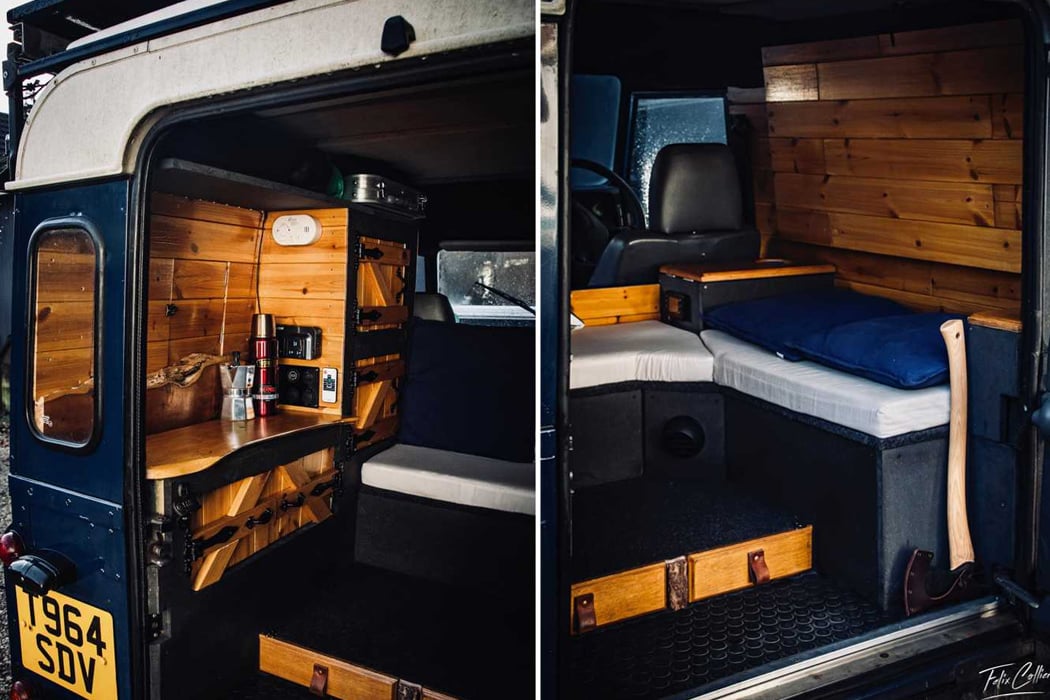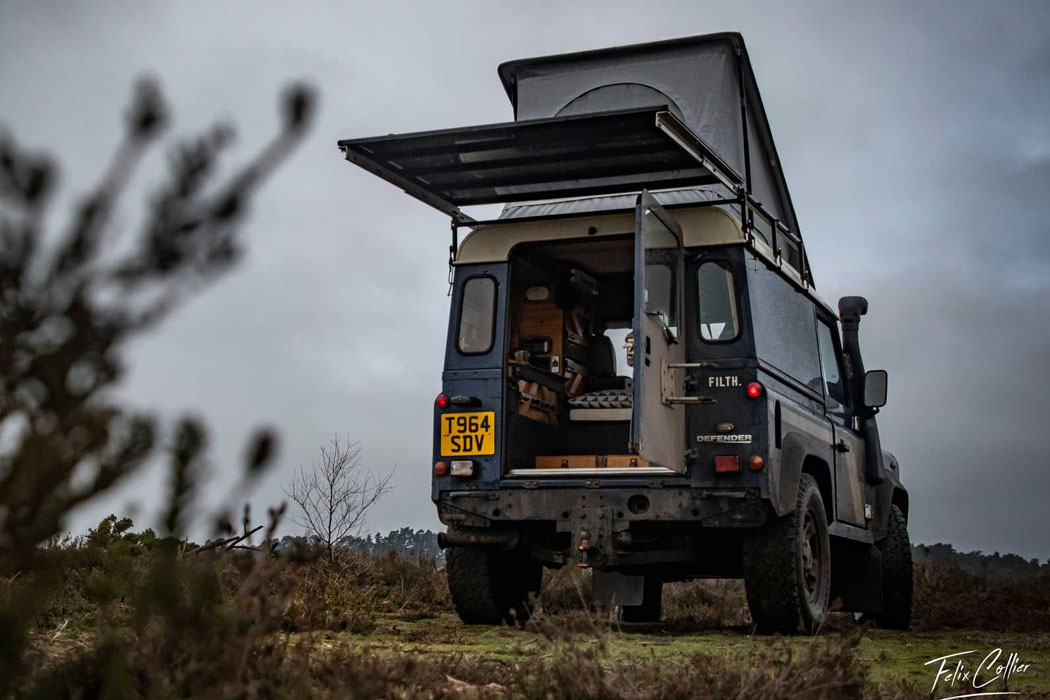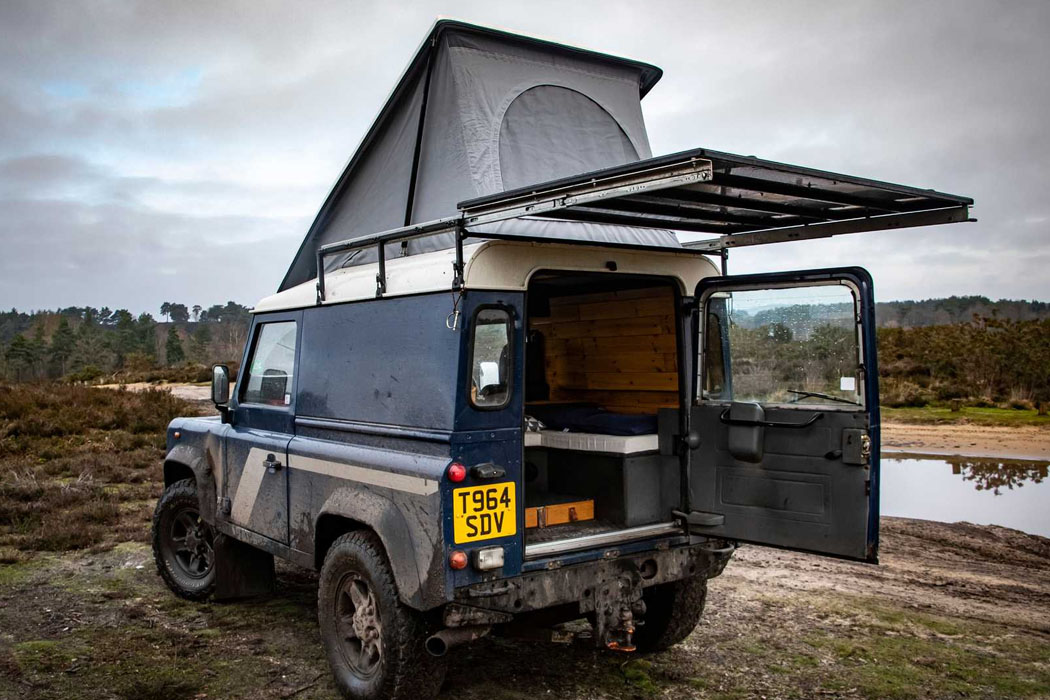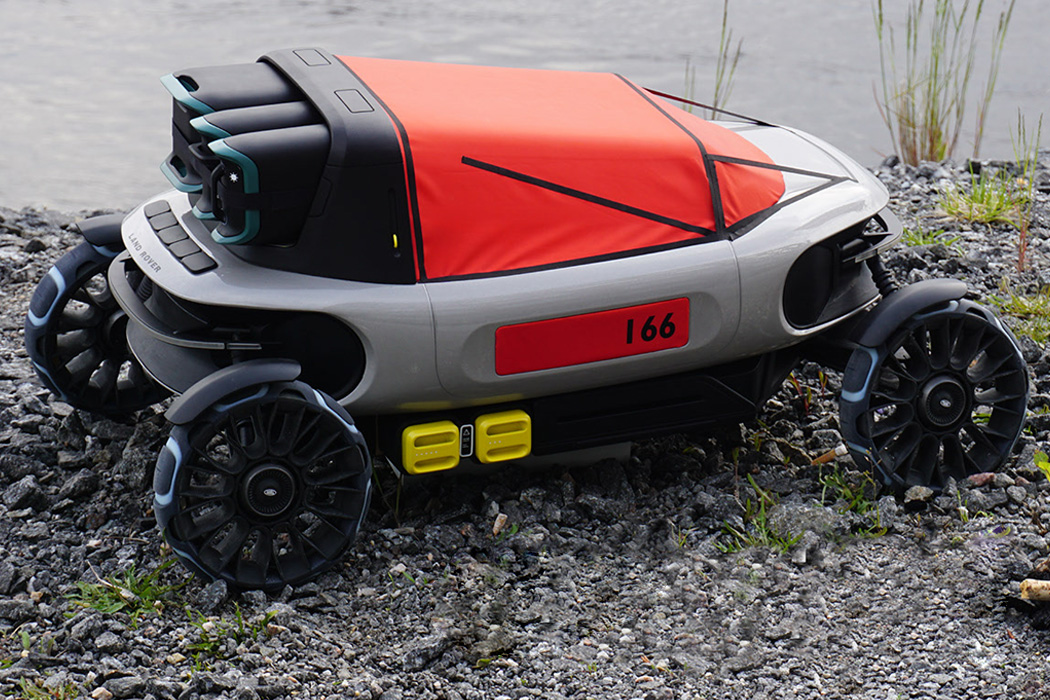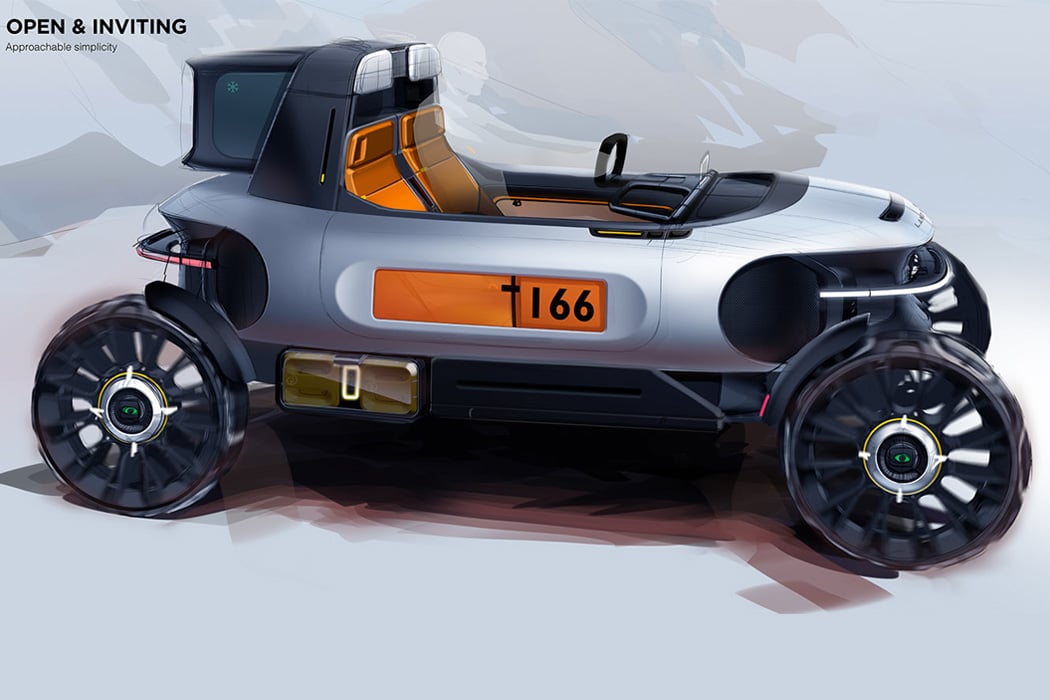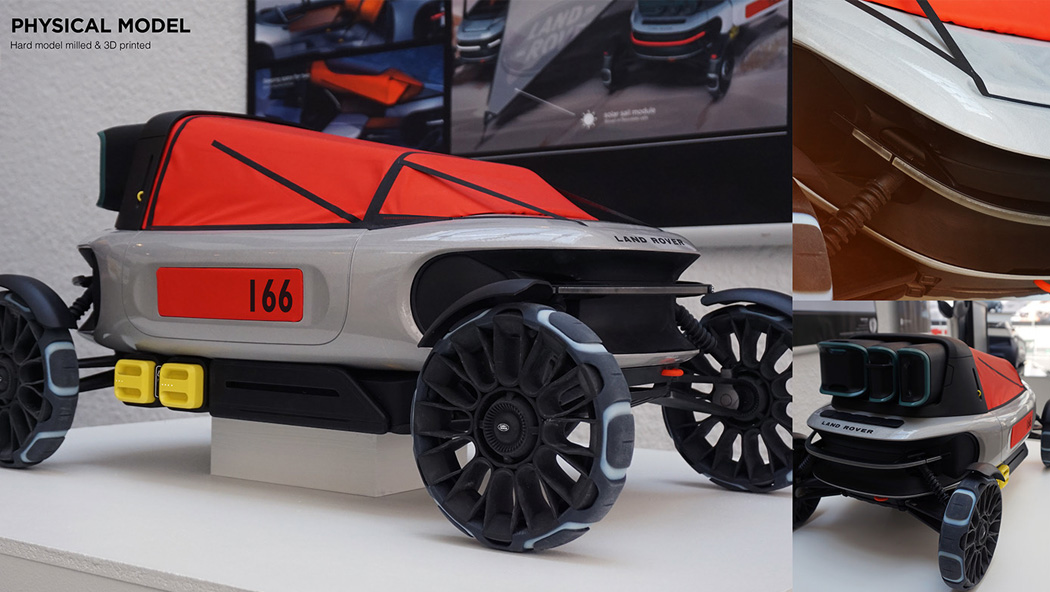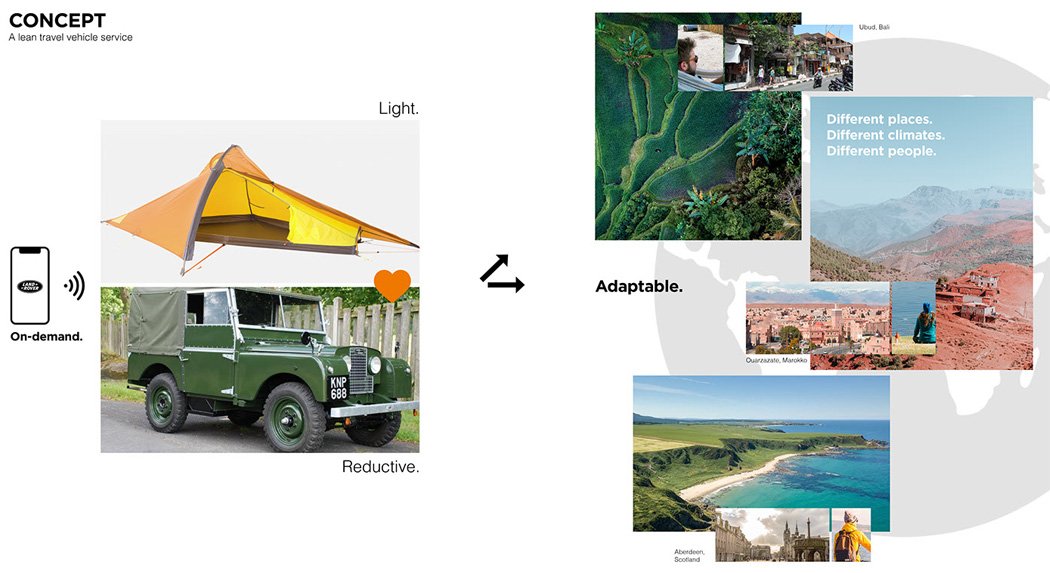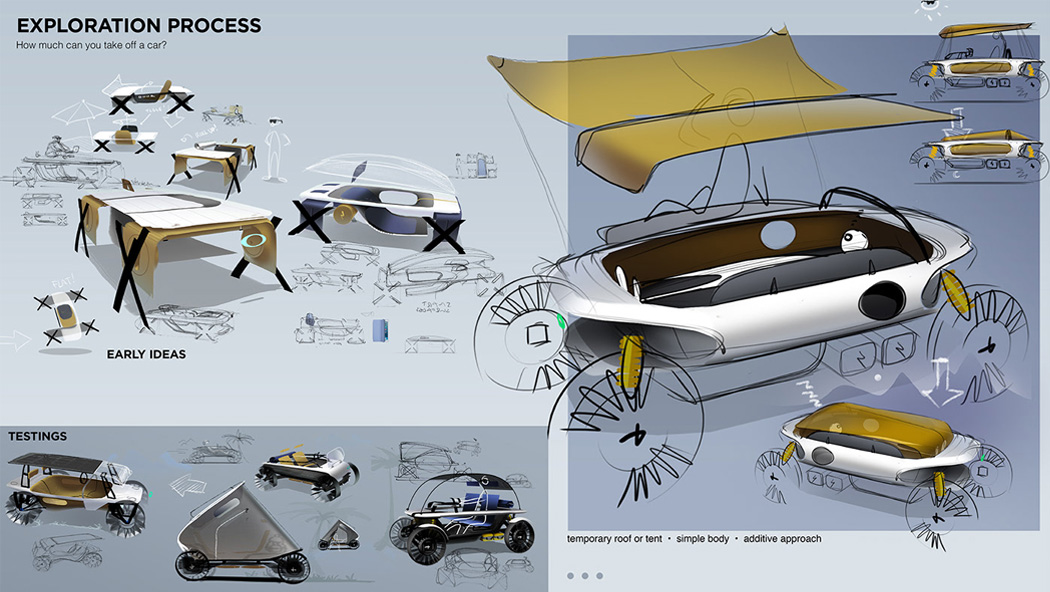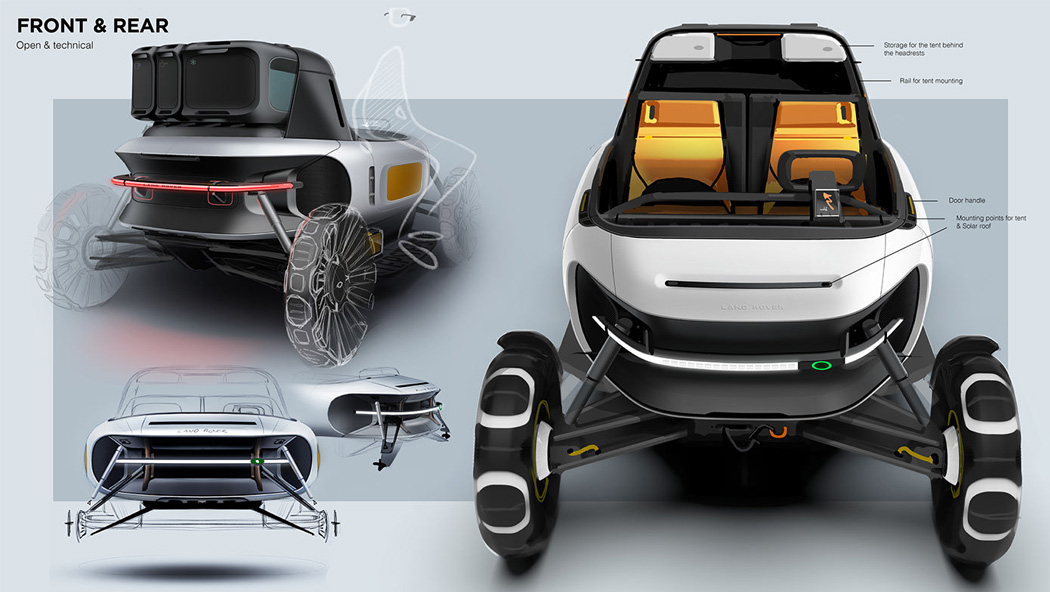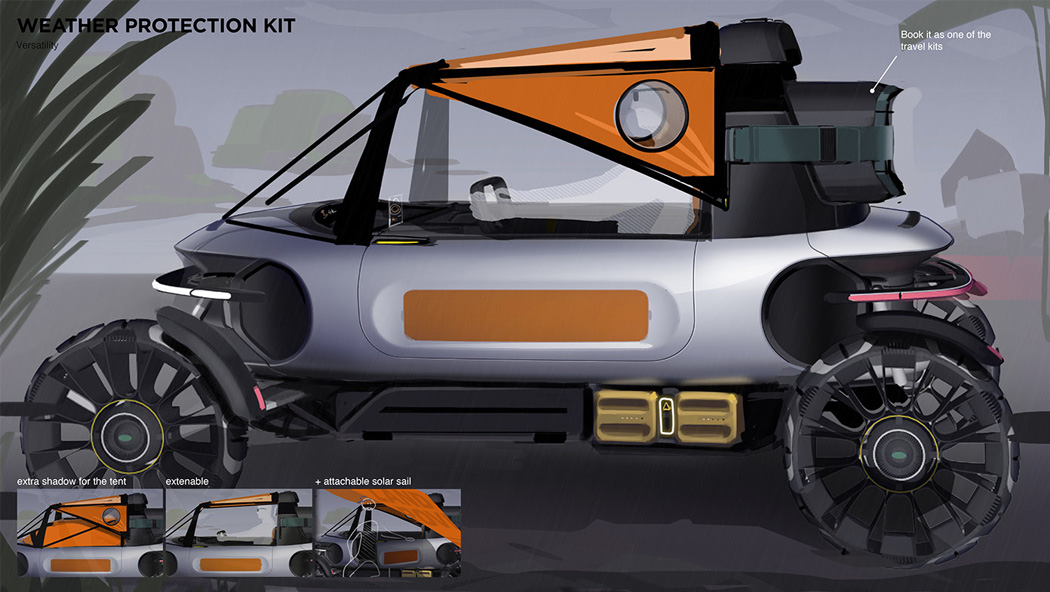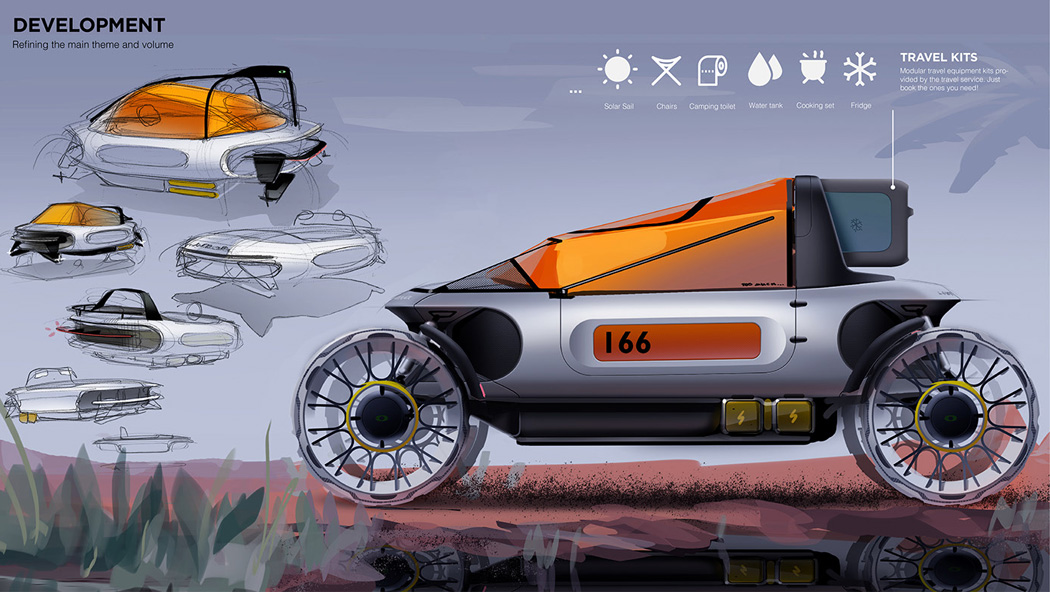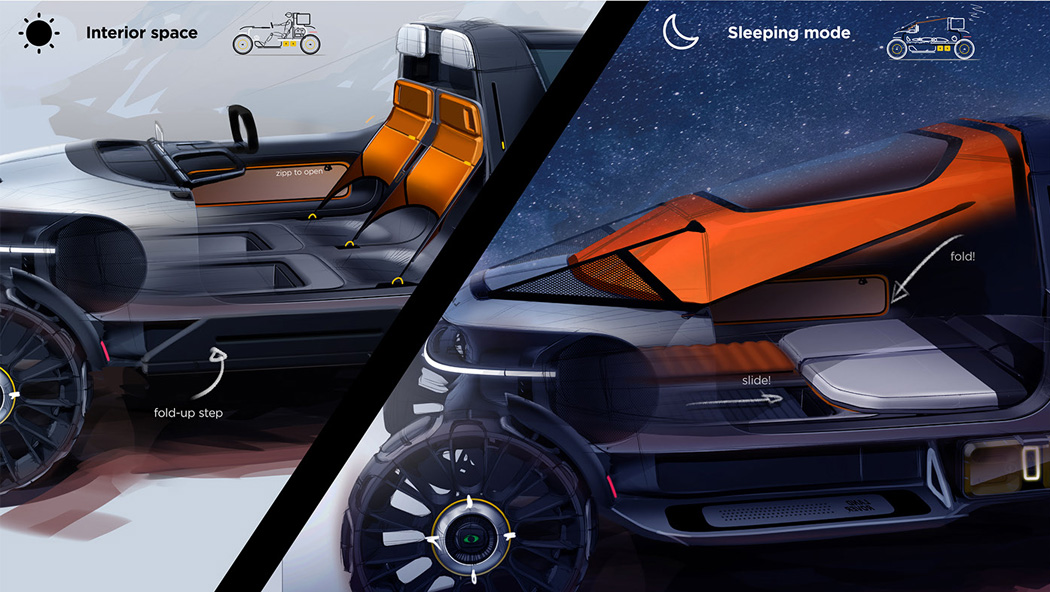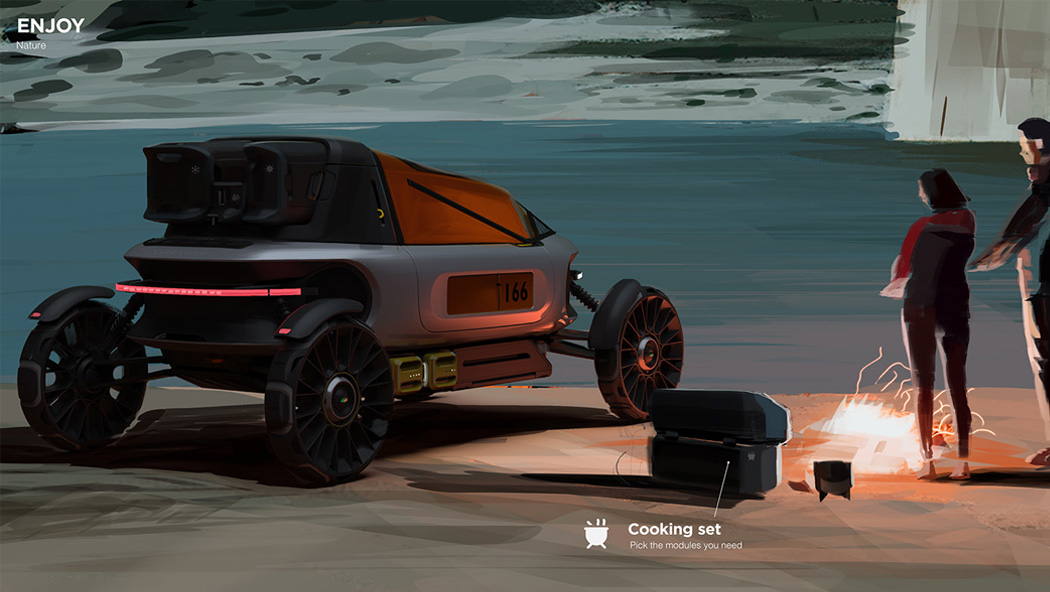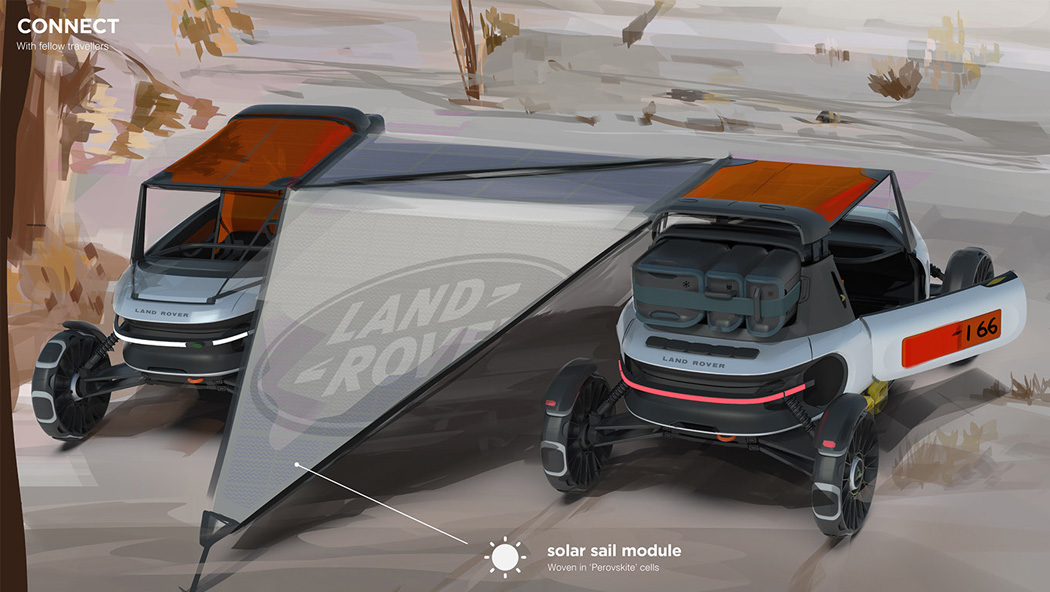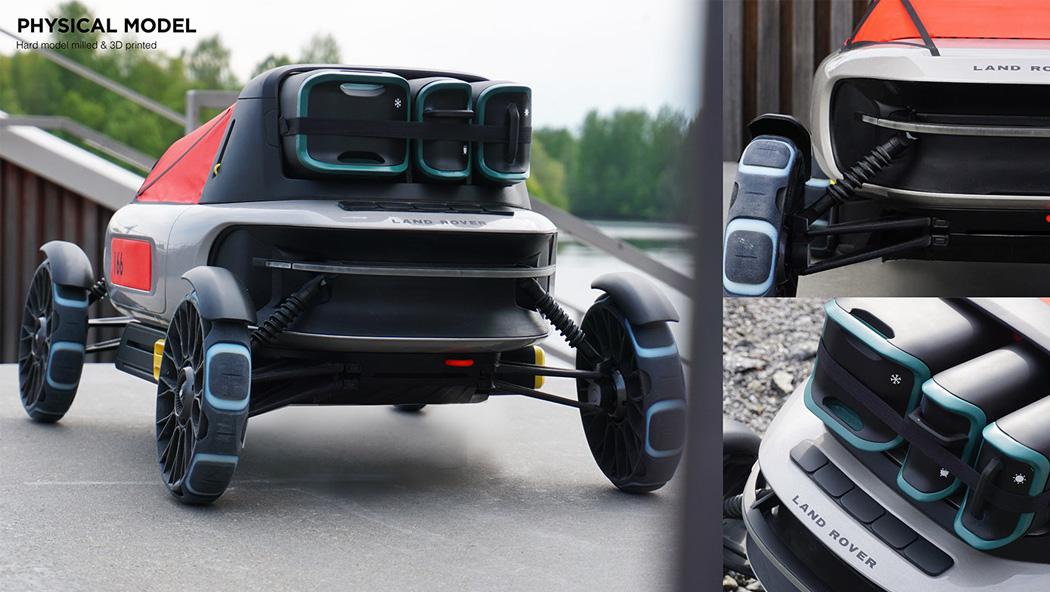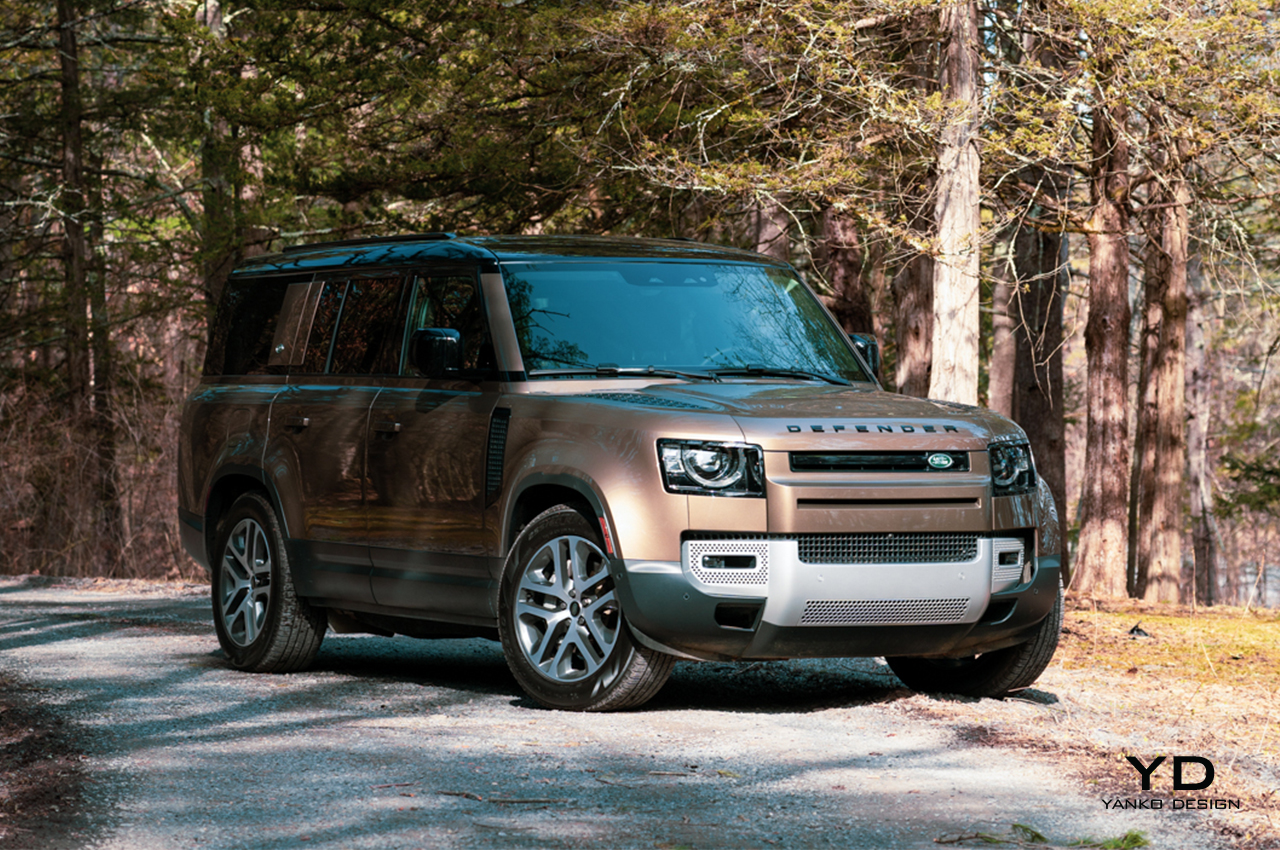
PROS:
- Clean, stately looks
- Stellar off-road performance
- Seating for eight
CONS:
- Thirsty
- Lots of wind noise
- Optional adaptive cruise
EDITOR'S QUOTE:
The Defender 130 is a mighty package, and not just because it's so big.
Adventures are better with friends. The grandest of scenery looks finer when you have someone to share it with, the most grueling of hikes feels that much more rewarding at the summit. It stands to reason, then, that a bigger Defender capable of hauling even more people in even more comfort would offer an even greater experience than a smaller one.
And it does, for the most part. The Land Rover Defender 130 is literally grander, 13.4-inches longer than the 110 or a whole 30.6 more than the 90, making room for a third row of seats and potentially seating eight adventure-seeking adults.
But are the compromises and extra cost worth it?
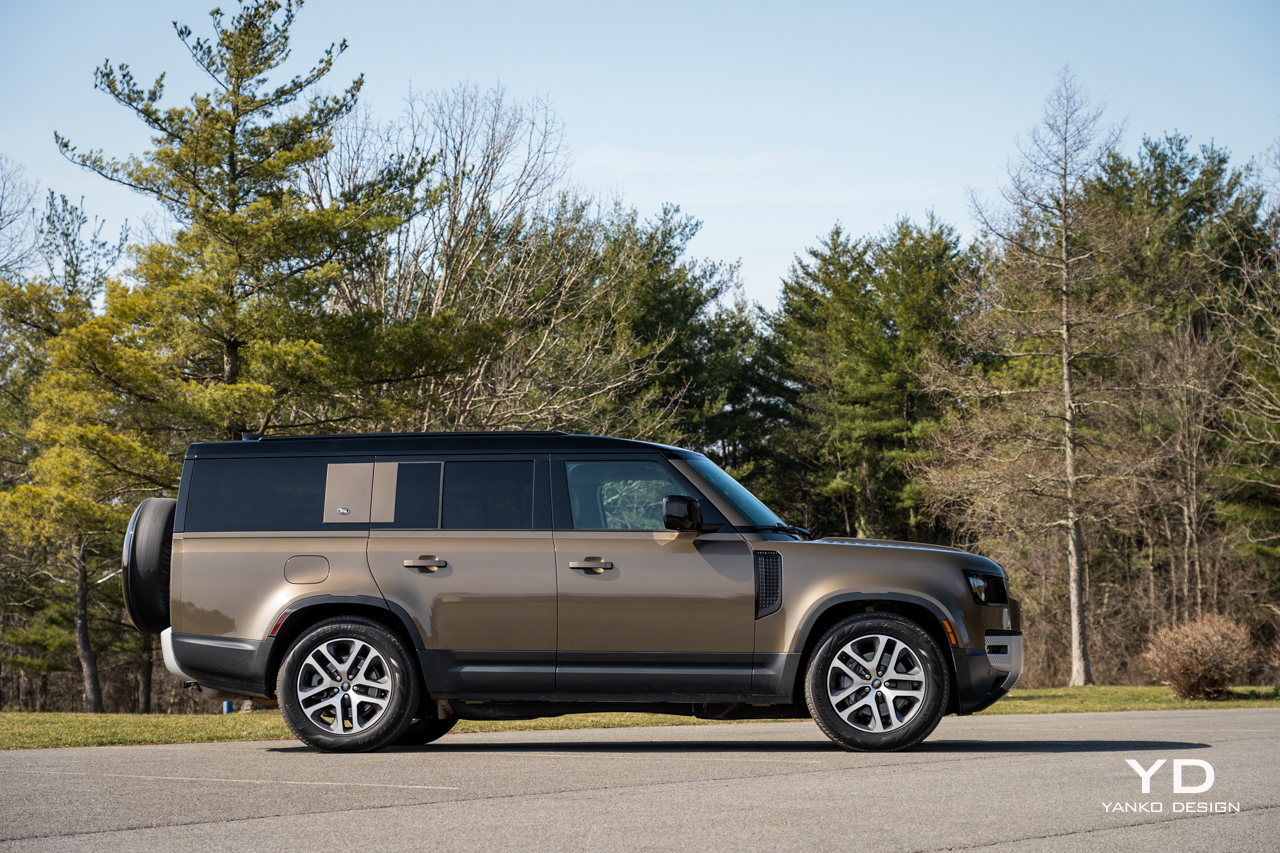
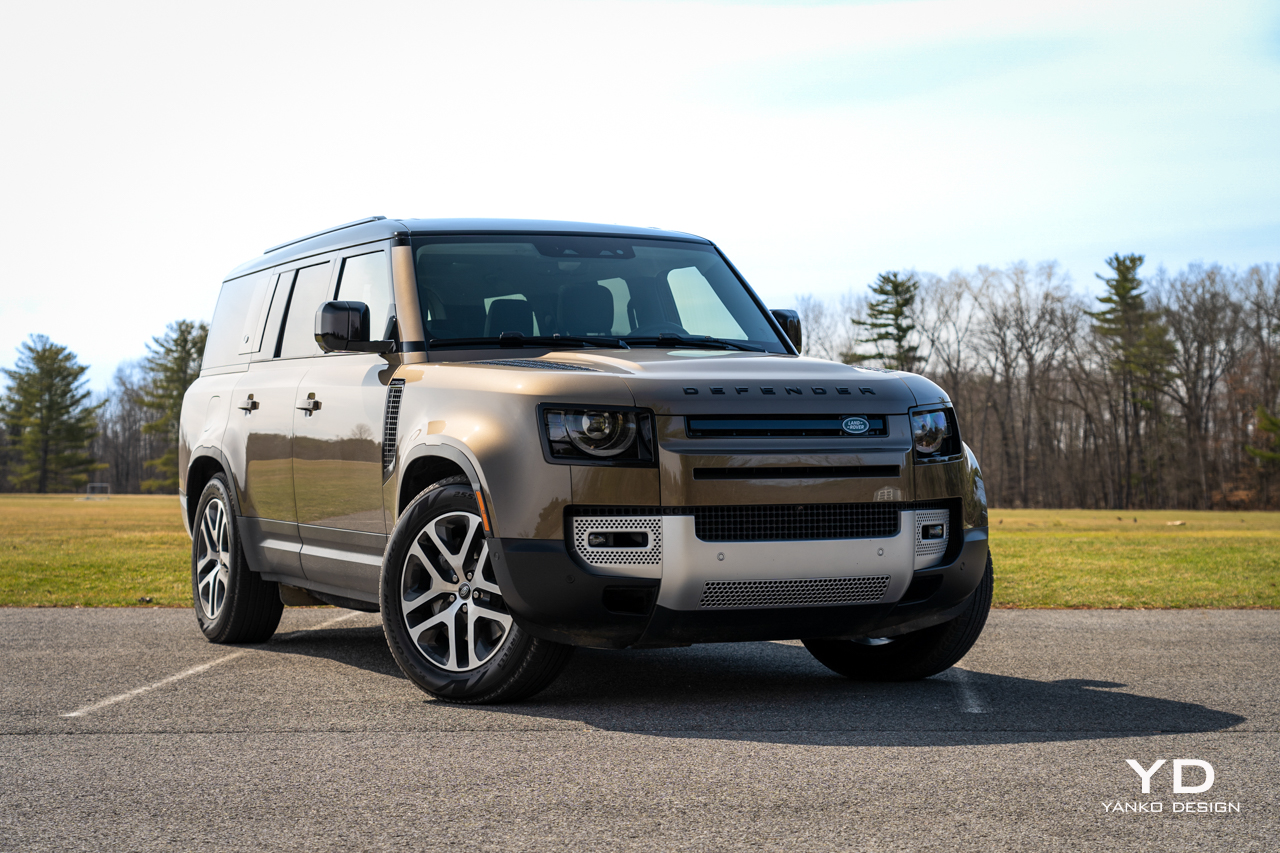
Exterior design
The current design of the Land Rover Defender is three years old now but it still looks fresh, riddled with styling cues that are curiously modern for a machine making such a strong heritage play, drawing on 70-odd years of legacy and containing just enough throwback touches to look familiar. It’s impossible to look at this and not feel ready to head out into the wilderness.
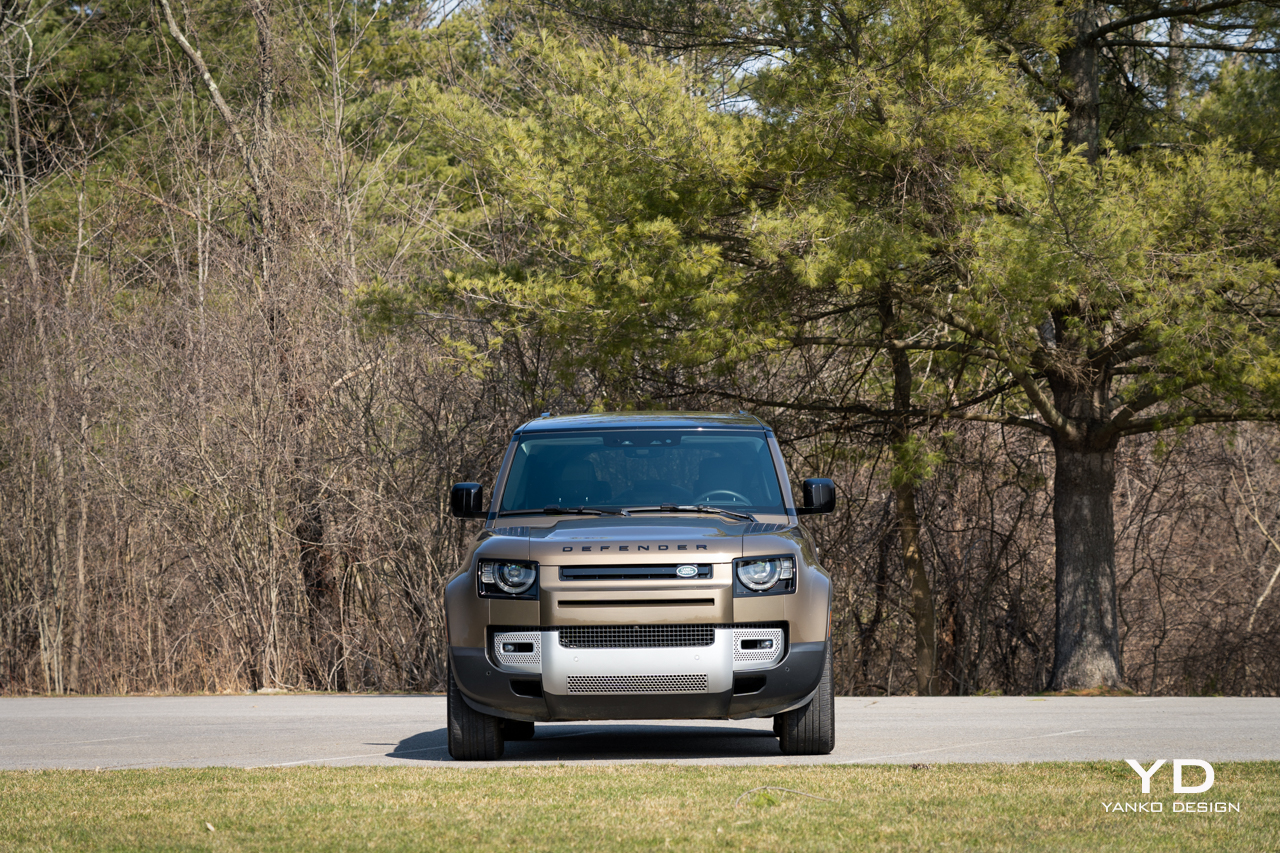
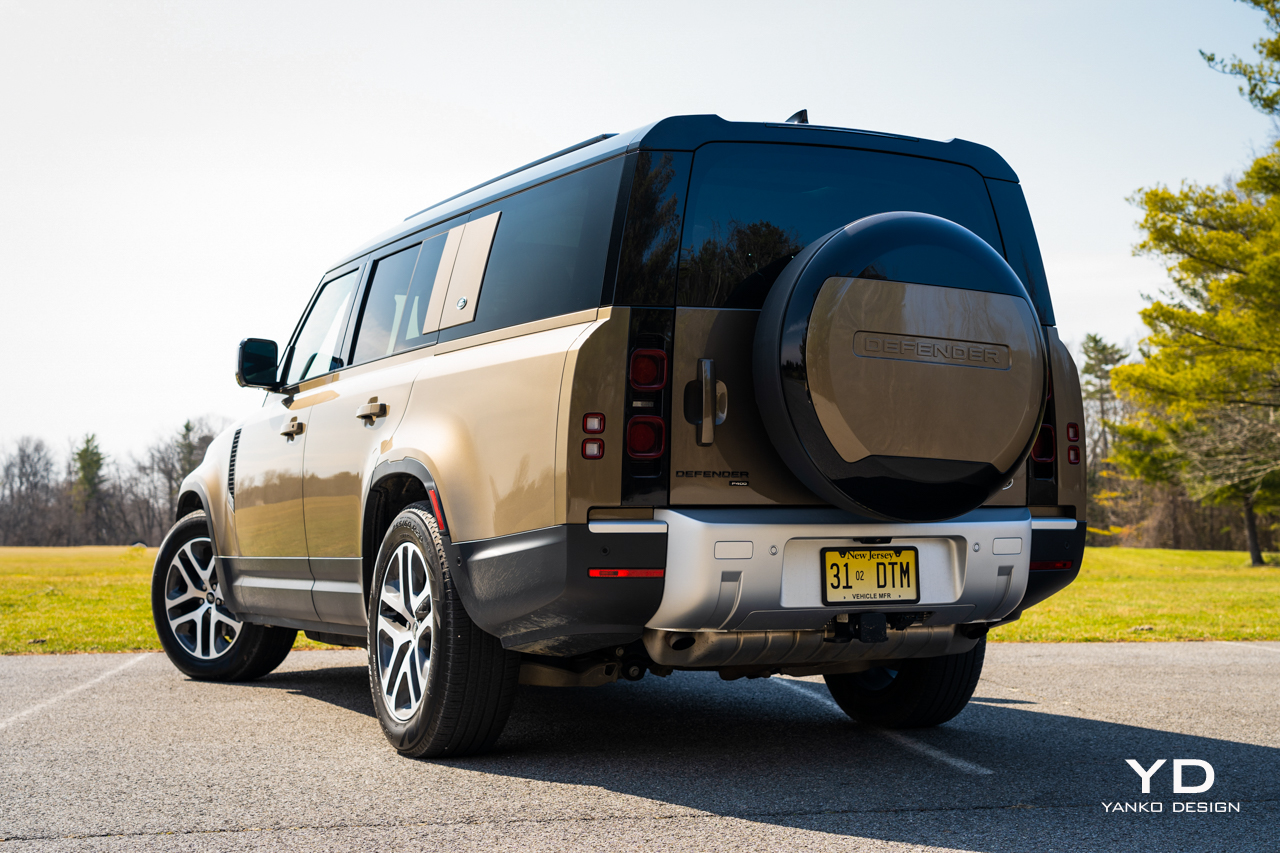
It’s an SUV that draws the eyes and holds it, starting with the headlights that shine out from what looks to be a disapproving brow. The generous aluminum guard up front will keep the worst of the brush off the paint and plastic while the high rear bumper and exhaust advertise this thing’s 28.5-degree departure angle. That’s down from 40 degrees on the Defender 90 and 37.5 on the 110, though the approach angle of 37.5 is the same on all three and the ramp angle is only 0.3 degrees off from the Defender 110. In other words, you’re really not giving up that much off-road performance for the extra length.
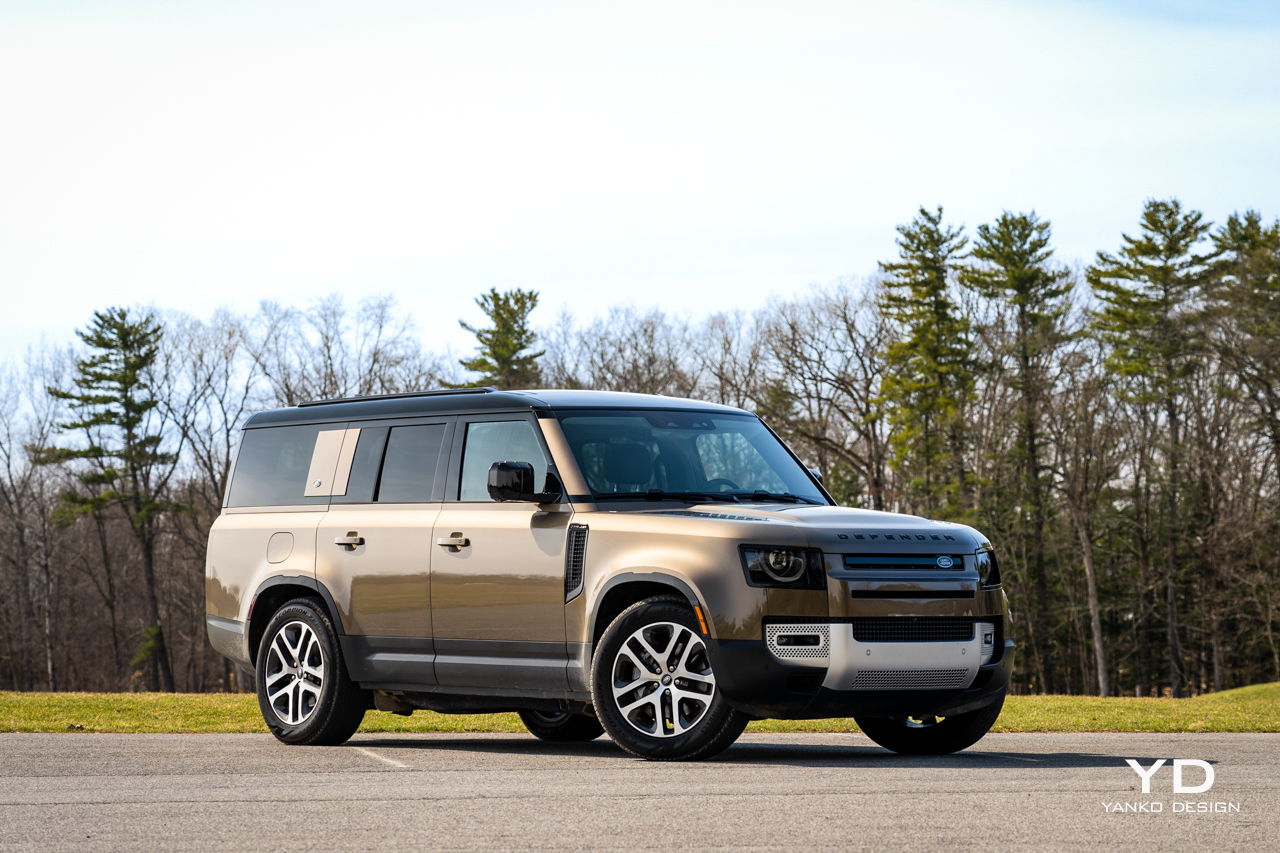
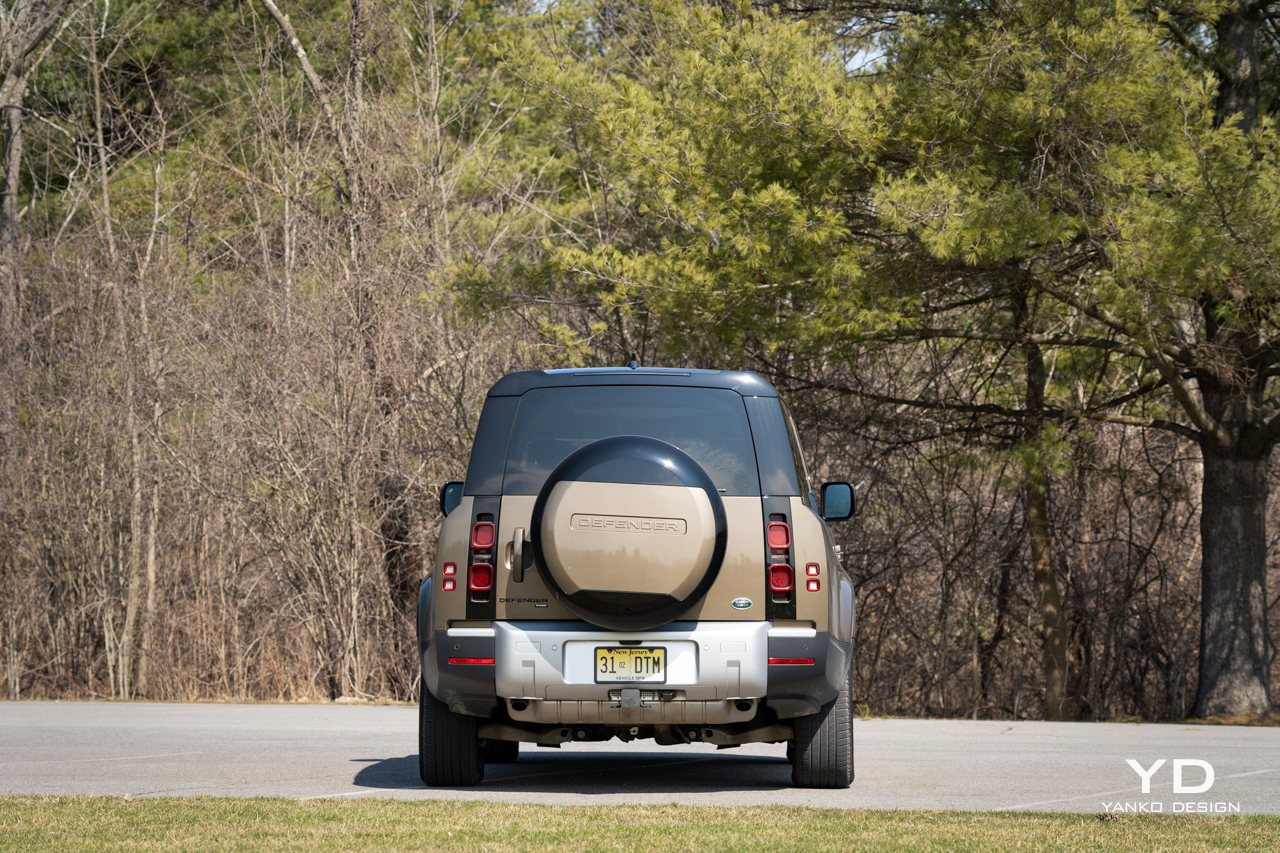
You do give up some design purity. The side profile of the 130 is generous, looking every bit the sixteen-foot-long SUV that it is, especially parked next to a Defender 110. It looks like all the extra length comes aft of the rear axle because it does, both sharing the same 119-inch wheelbase.
But, some sacrifices must be made in the name of practicality, and in the case of the 130, that practicality comes in the form of internal volume.
Interior design
Third-row seating is the 130’s hallmark. Getting back there is a bit awkward, as the second row only slides forward a few inches, leaving a narrow gap to duck through. That, plus the height of the Defender, means those headed to the way-back may need a boost. But, once you get there it is surprisingly comfortable. I’m six-feet tall and I had plenty of headroom and shoulder room.
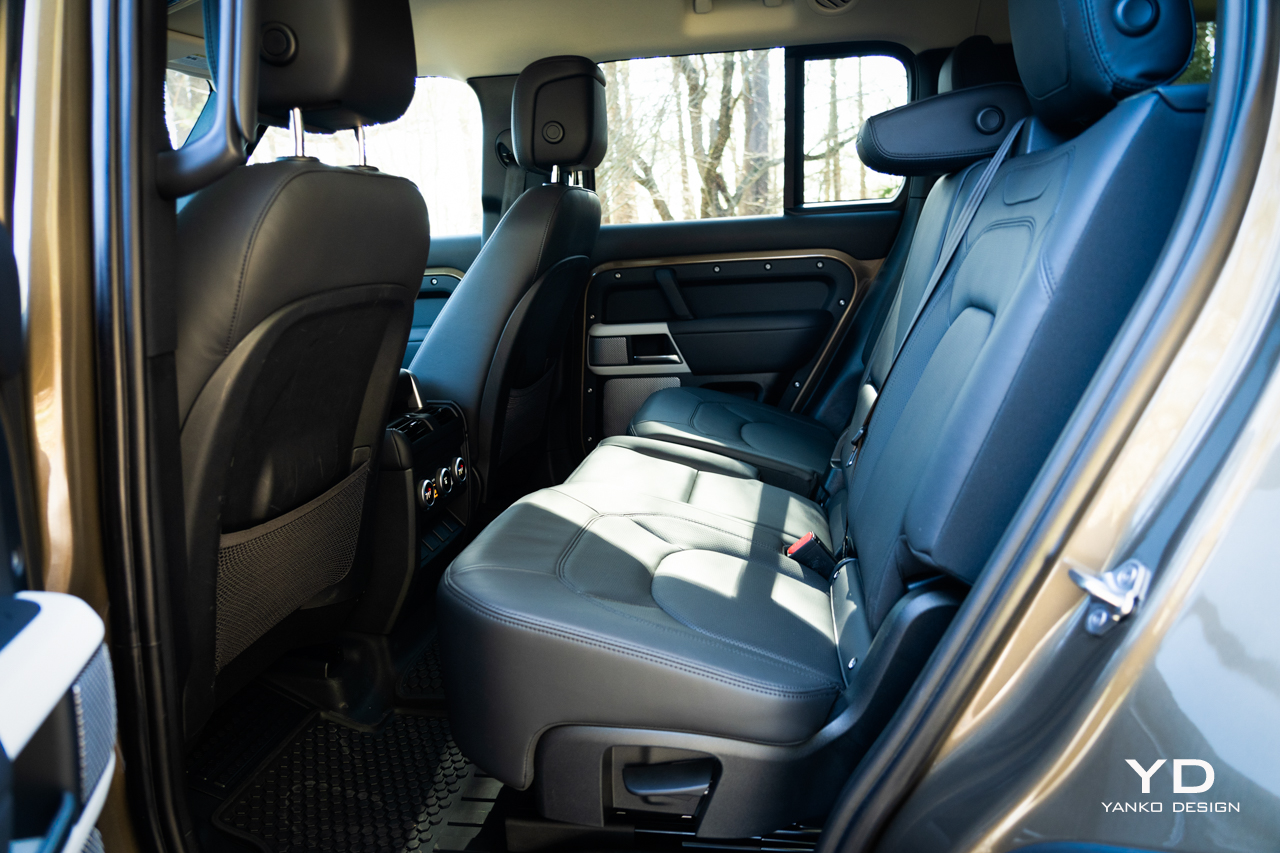
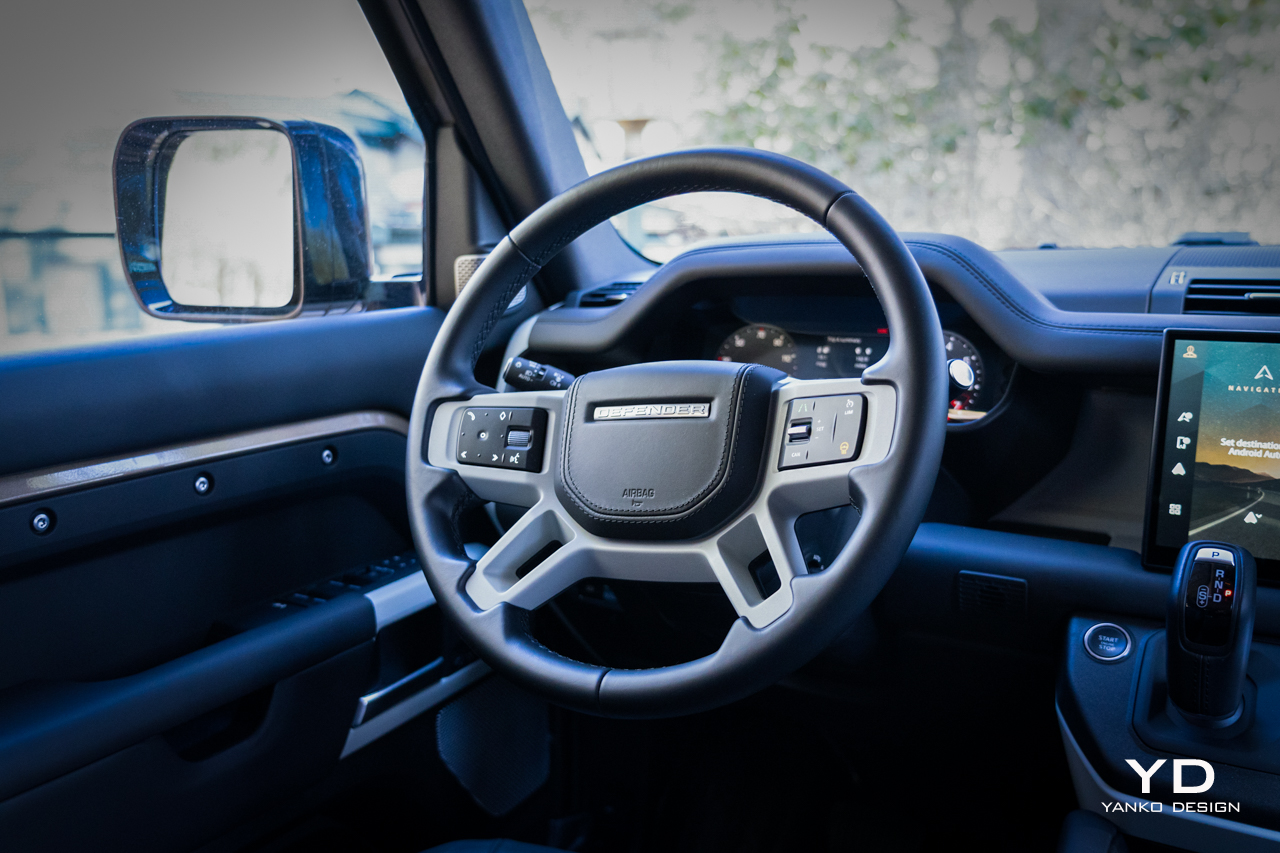
There’s even good visibility from the third row, thanks to generous side windows and even a separate sunroof overhead. Surprise, being relegated to the third row here isn’t quite the torture you might have expected.
Things get better as you travel forward. The second row seats are just that bit more spacious, sliding and reclining or, if you need the maximum 76.1 cubic feet of cargo space, folding flat along with the third row. Leave all the seats up, though, and there’s just a token bit of storage behind the rear seats, enough for a run to the grocery store and not much else.
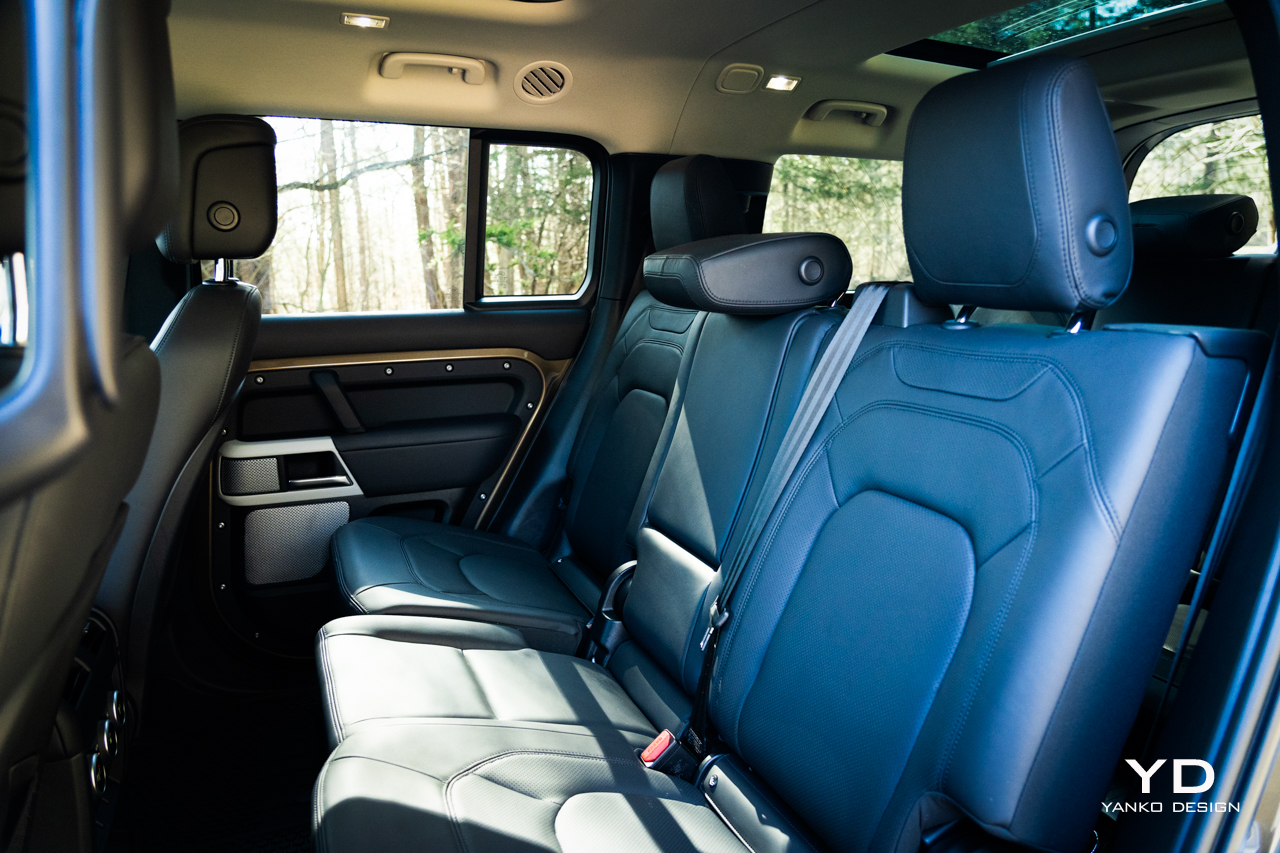
On this SE trim Defender 130, second-row occupants have their own climate controls, but no heated seats and not even a token USB port for charging. They do, however, get some sun from the second, panoramic sunroof.
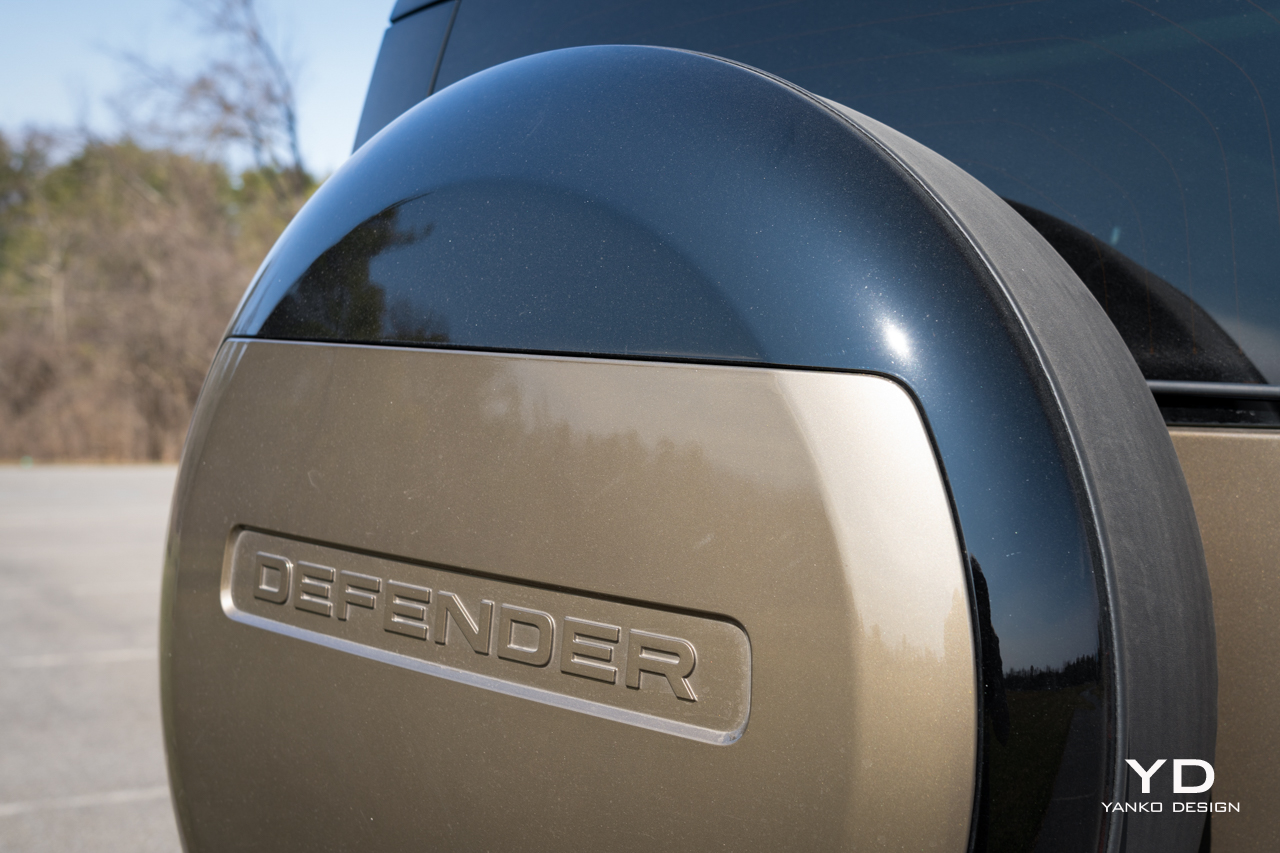
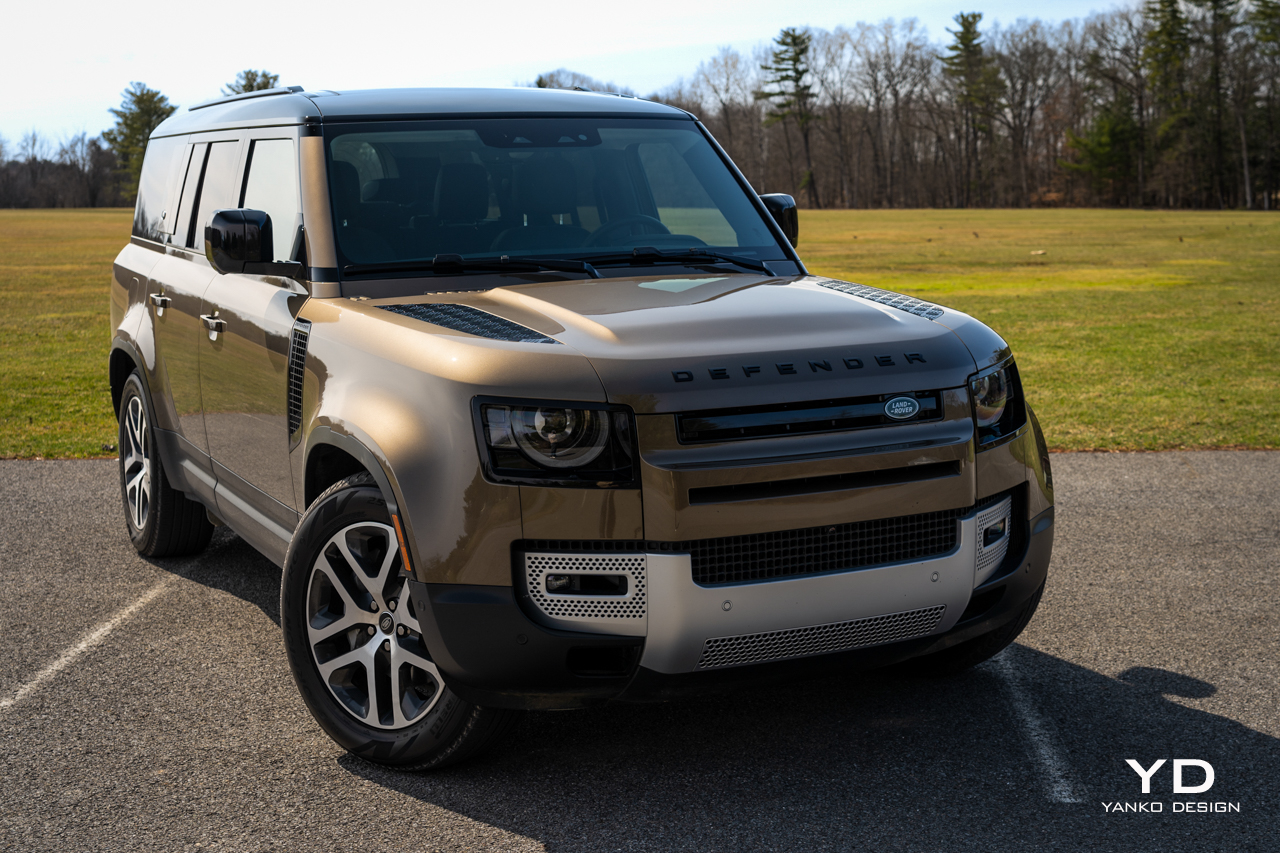
Up front is the best place to be, power captains chairs with memory offering good support and plenty enough adjustability that you can drop them down low when motoring on the highway or hike them up when hitting the trails for a little better perspective over the hood.
The overall interior design is purposefully chunky and mechanical, with plenty of exposed Torx screws, grab rails everywhere, and so many little storage compartments that you’re sure to collect at least a few of your friends’ smartphones with every journey. Up front there’s a pair of USB ports, one A and one C, along with a separate Qi wireless charging port, taking advantage of the wireless Android Auto and Apple CarPlay here.
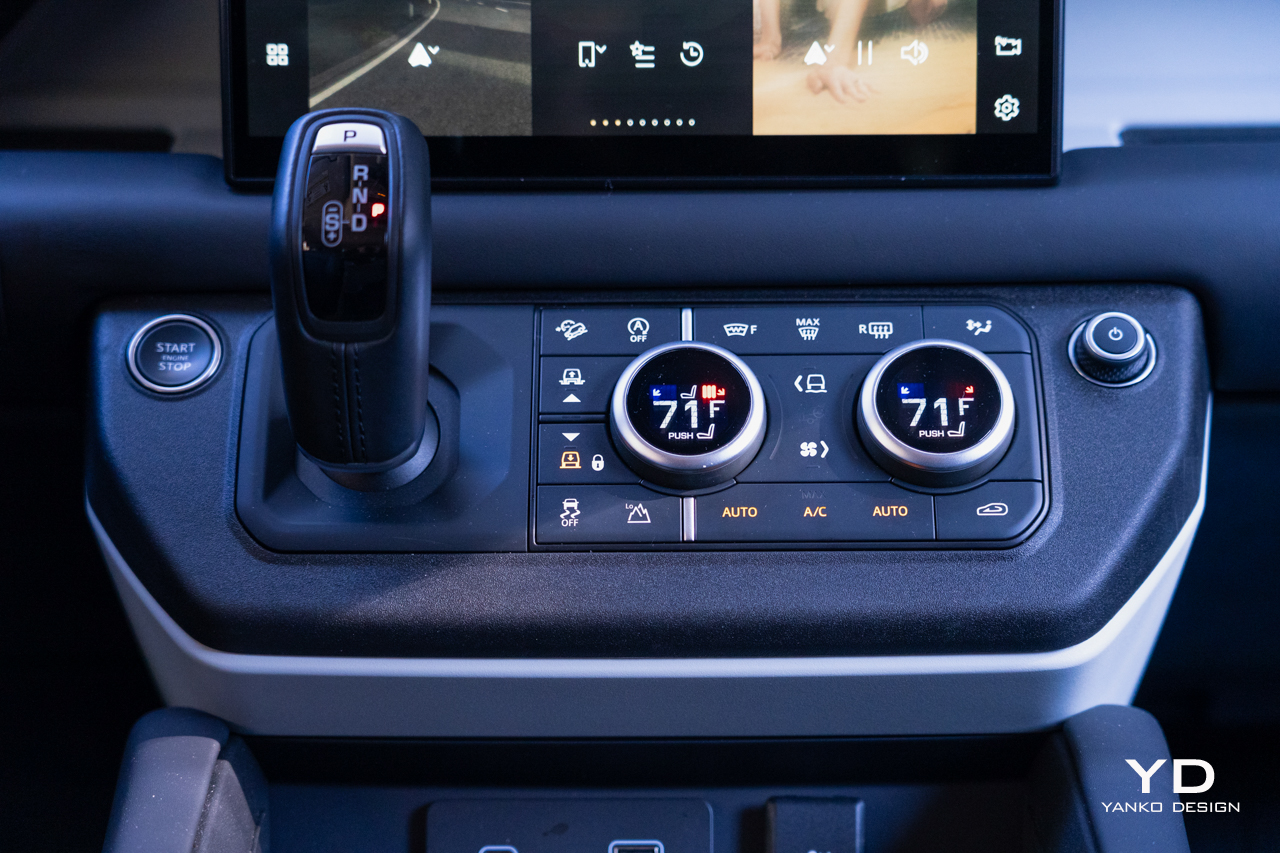
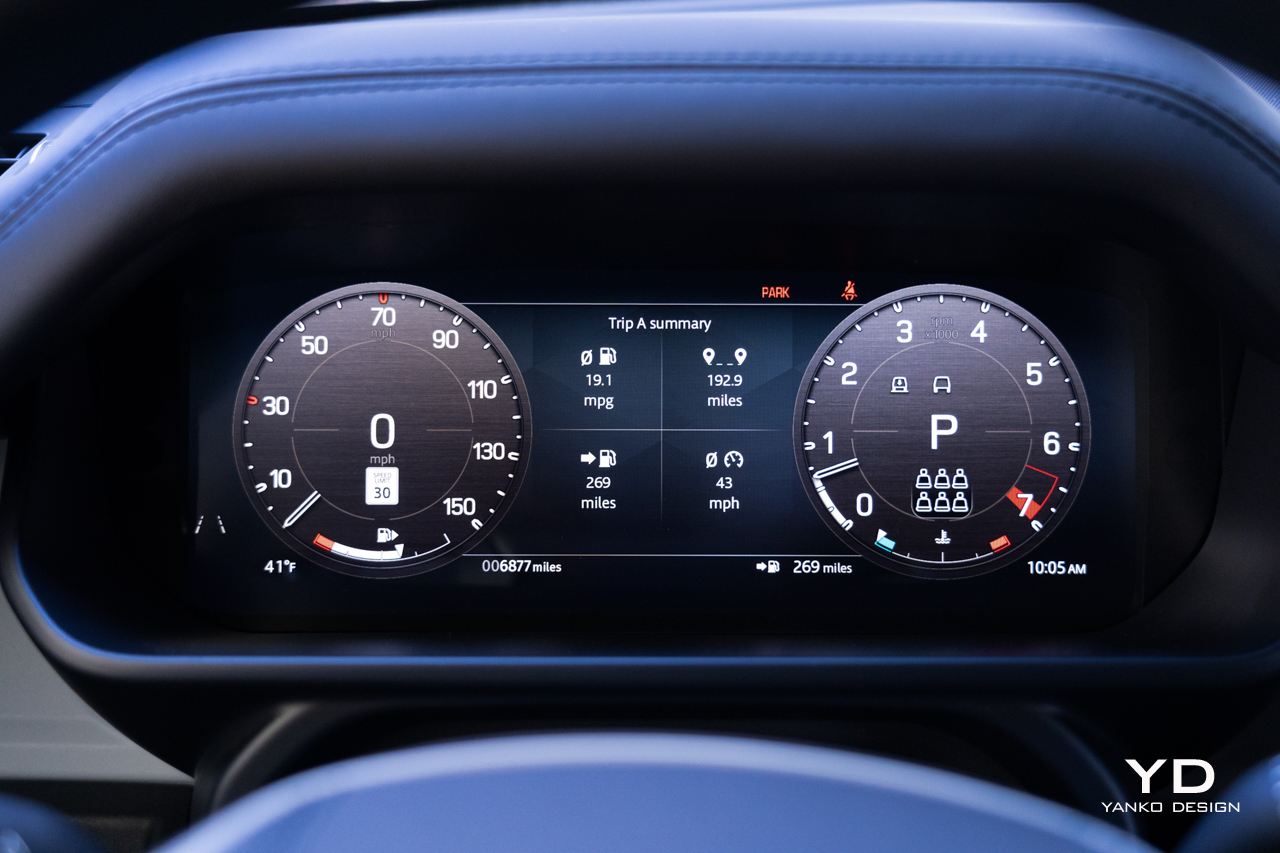
Those are displayed on a 11.4-inch, widescreen infotainment display that is a perfect size, running Land Rover’s latest Pivi Pro infotainment experience. It has a clean, dark aesthetic and offers plenty of functionality, perhaps most important being an endless series of displays showing everything from angle of inclination to wading depth.
The gauge cluster is also fully virtual, situated behind a steering wheel with a leather wrapped rim and what feels like a metal center, powder coated white. The color contrast and the stout feel of the material are a great match for what this machine can do.
On the road
The Defender 130 is a big, tall, off-road focused SUV and so you’d be readily forgiven for thinking it’d have all the handling prowess of a freighter, but you’d be wrong. To be fair, it is not a machine that likes to be rushed. Turn the steering wheel to enter a turn and you’ll find yourself reaching for more rotation before the Defender reluctantly comes to your desired line. But, relaxed handling does not mean bad.
Air suspension lifts the Defender 130 up to 11.5 inches of ground clearance when off-road. For on-road duty, it also provides great compliance. The 130 doesn’t skitter and jump across rough surfaces at speed like older Defenders, at least partly thanks to the modern, unibody construction and the independent suspension. It’s a genuinely pleasant commuter.
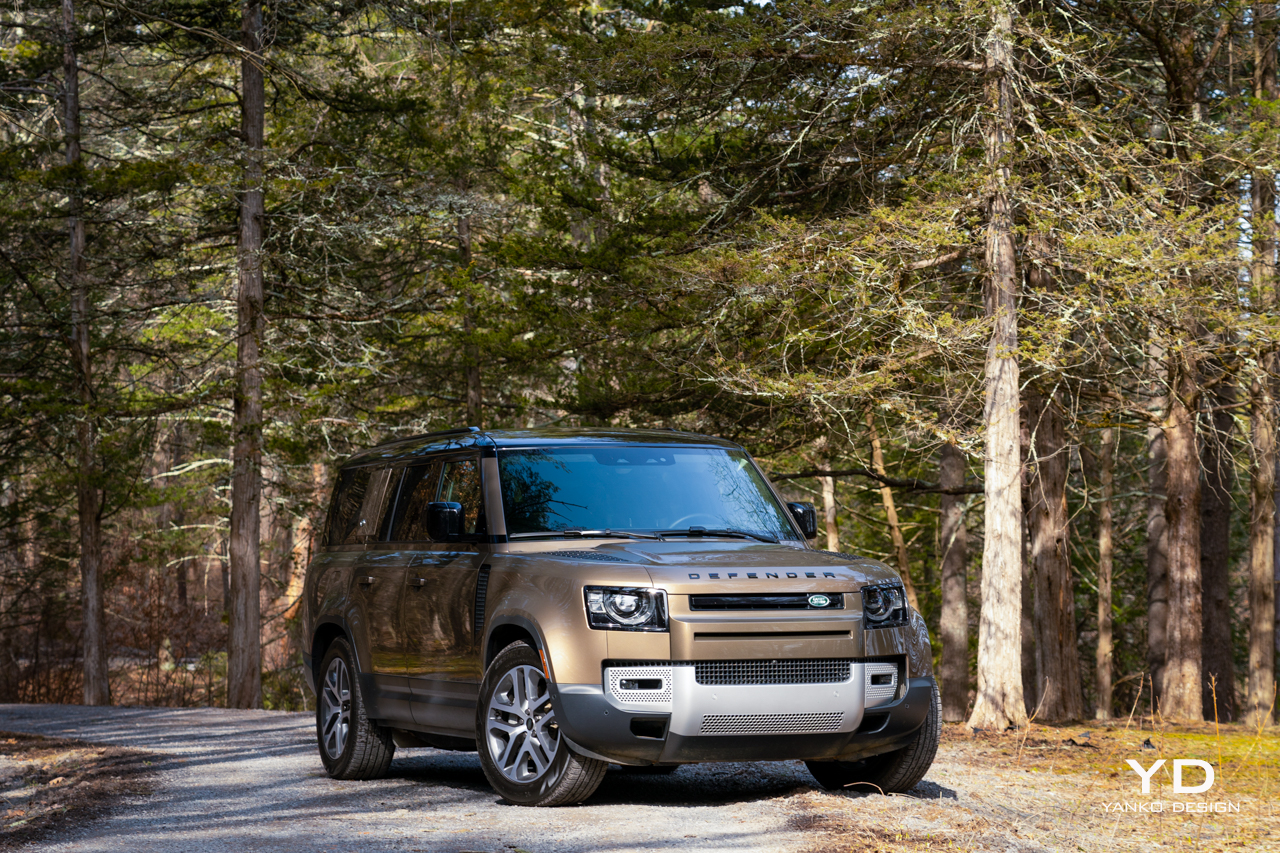
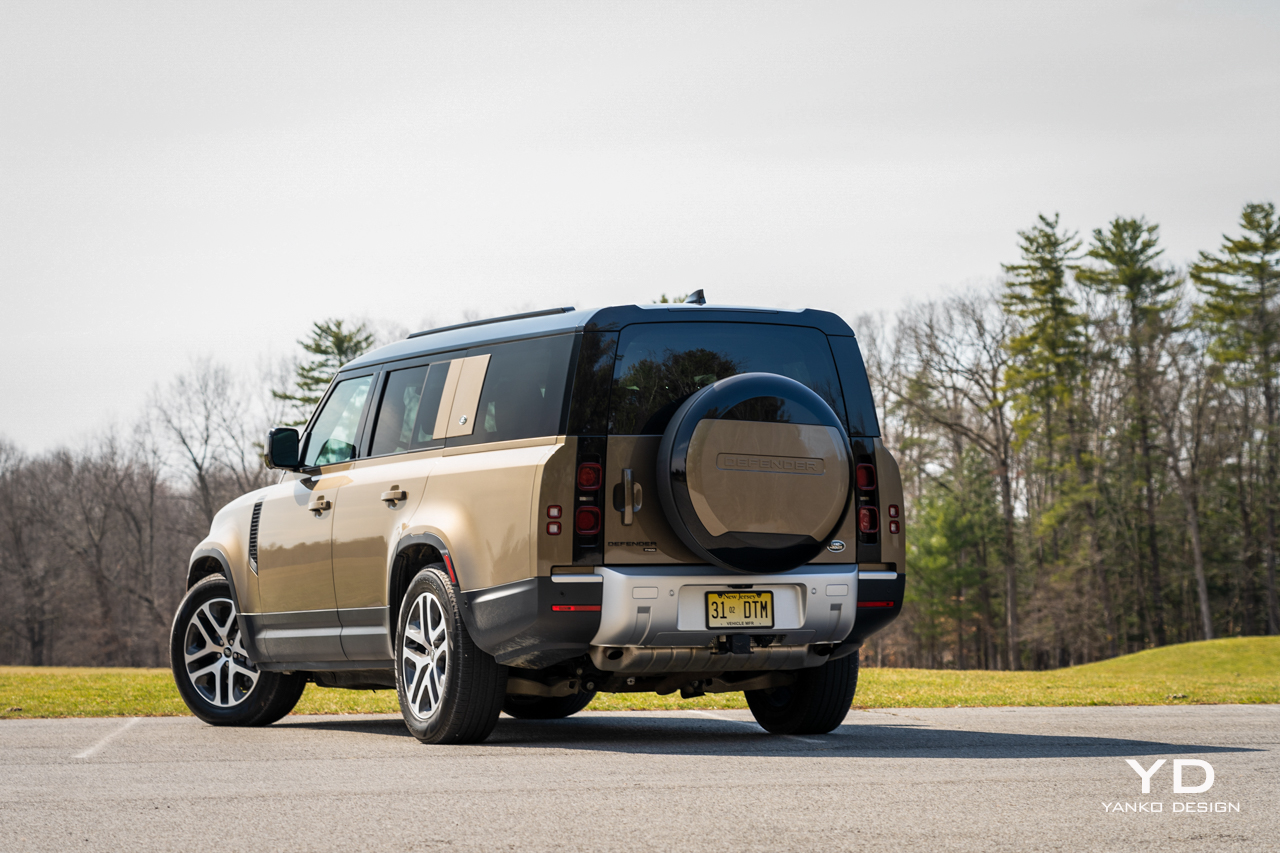
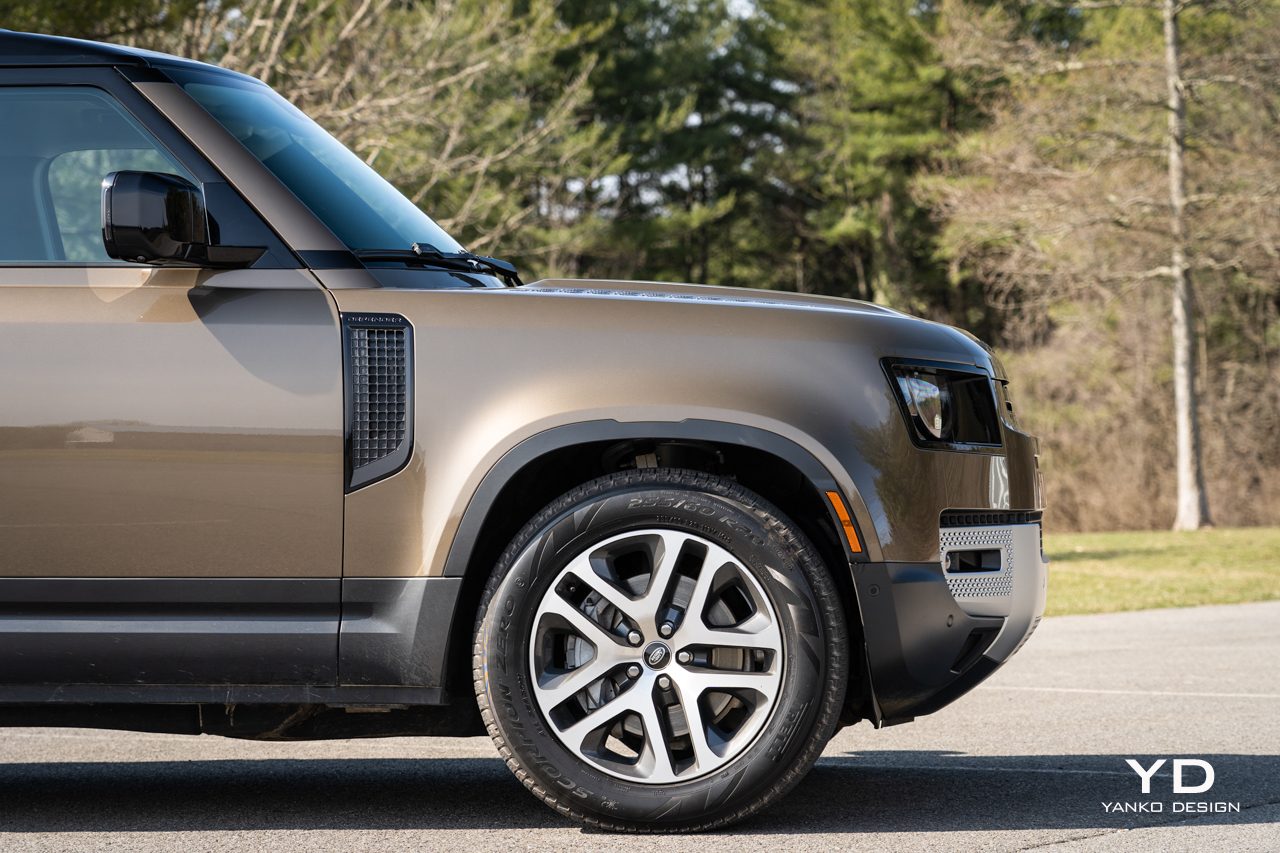
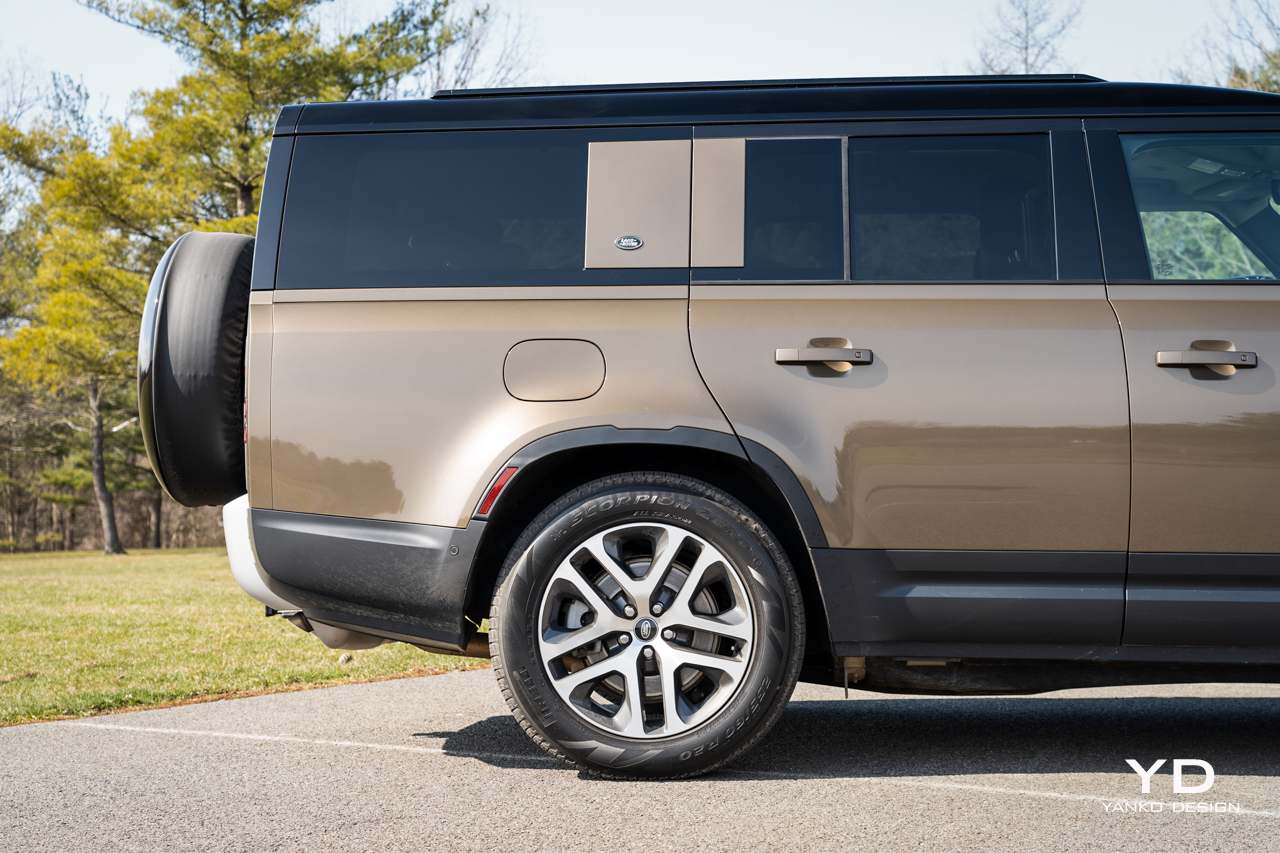
At higher speeds there’s a fair bit of wind noise, which should come as no surprise given the general shape of this thing. It’s also quite susceptible to cross-winds, also predictable given its prodigious cross-section. The 700 watt, 14-speaker Meridian sound system is more than capable of handling the wind noise, though the lane-keep-assist is a little less able when it comes to addressing the wandering. I found it unreliable on anything but wide, well-marked highways.
But it’s a fine highway cruiser, so much so that you might forget even this up-sized 130 is happiest while wading through the muck and the mire. With permanent all-wheel-drive bolstered by locking center and rear differentials plus a two-speed transfer case, the Defender is a legit performer in even the worst of conditions.
That’s all driven by Land Rover’s 3.0-liter inline-six engine, in either P300 trim with 296 horsepower and 295 pound-feet of torque, or P400, which steps things up to 395 hp and 406 lb-ft thanks to a mild hybrid system. Those are good numbers, but with this thing tipping the scales at over 5,500 pounds, there’s a lot of mass to move.
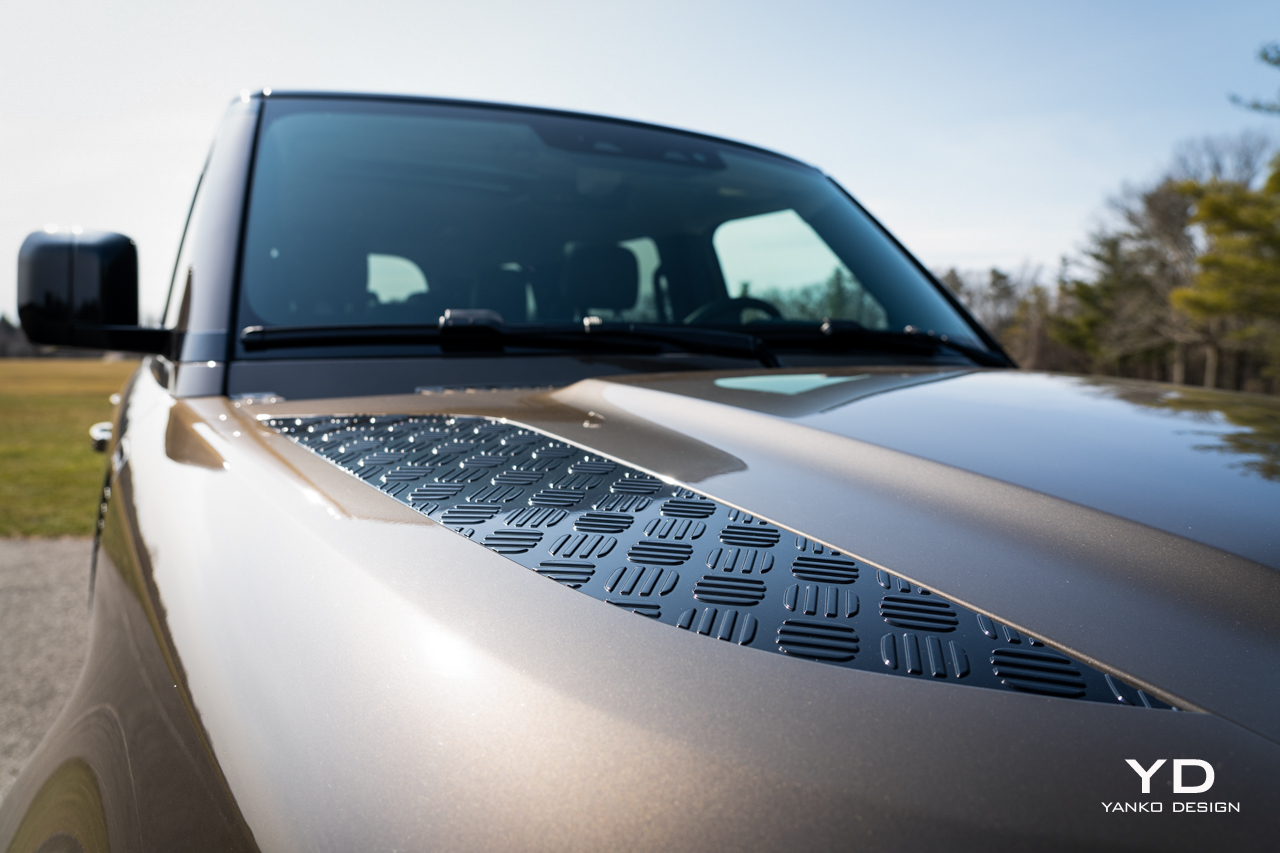
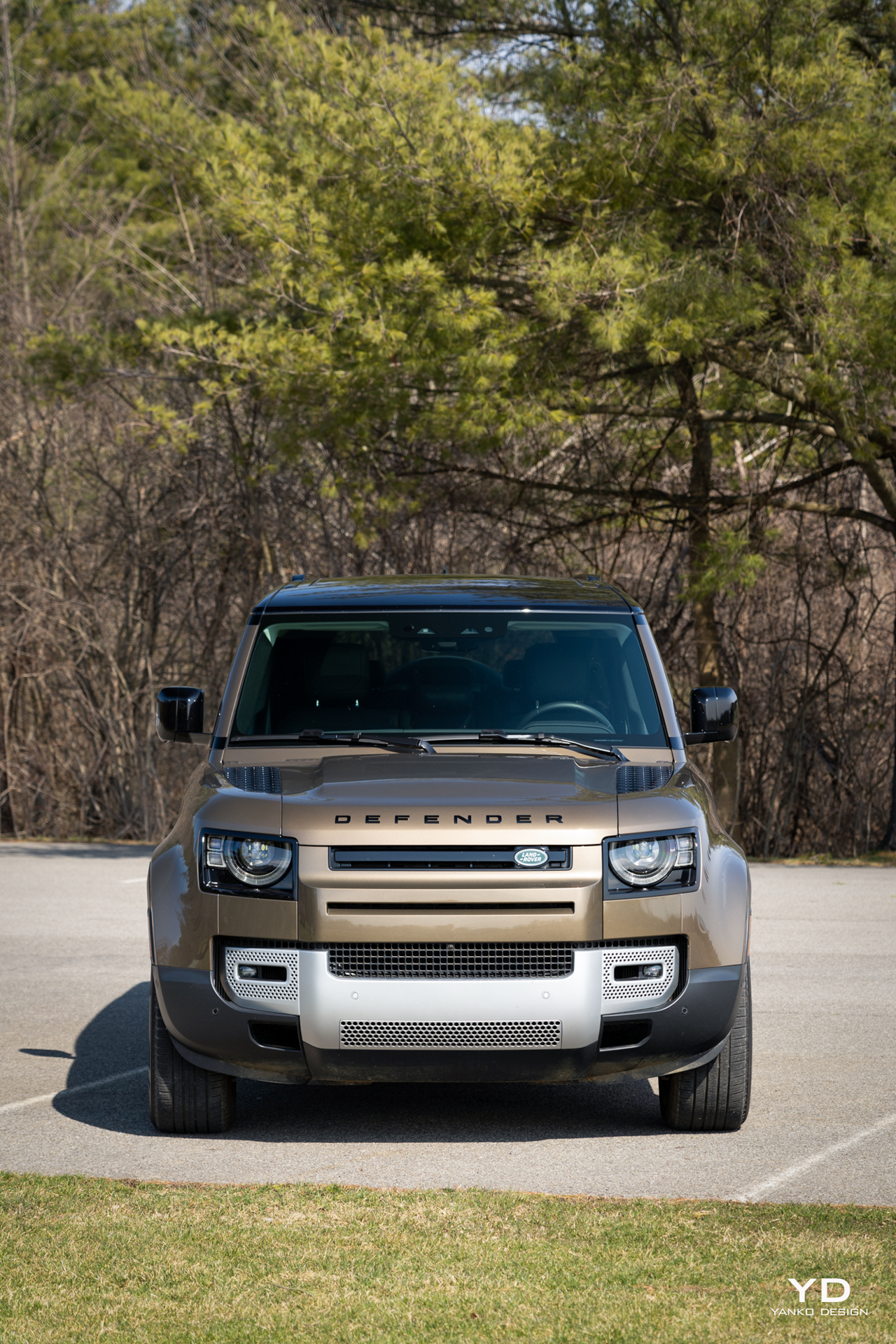
The Defender 130 with the P400 accelerates capably, even at highway speeds. The eight-speed auto shifts smoothly and, while it isn’t the most aggressive at downshifting for acceleration, does a good job of grabbing the right cog without giving anyone in the car whiplash. I saw 19.5 mpg in my testing, right on par with the 17 city, 21 highway, and 19 combined EPA estimates.
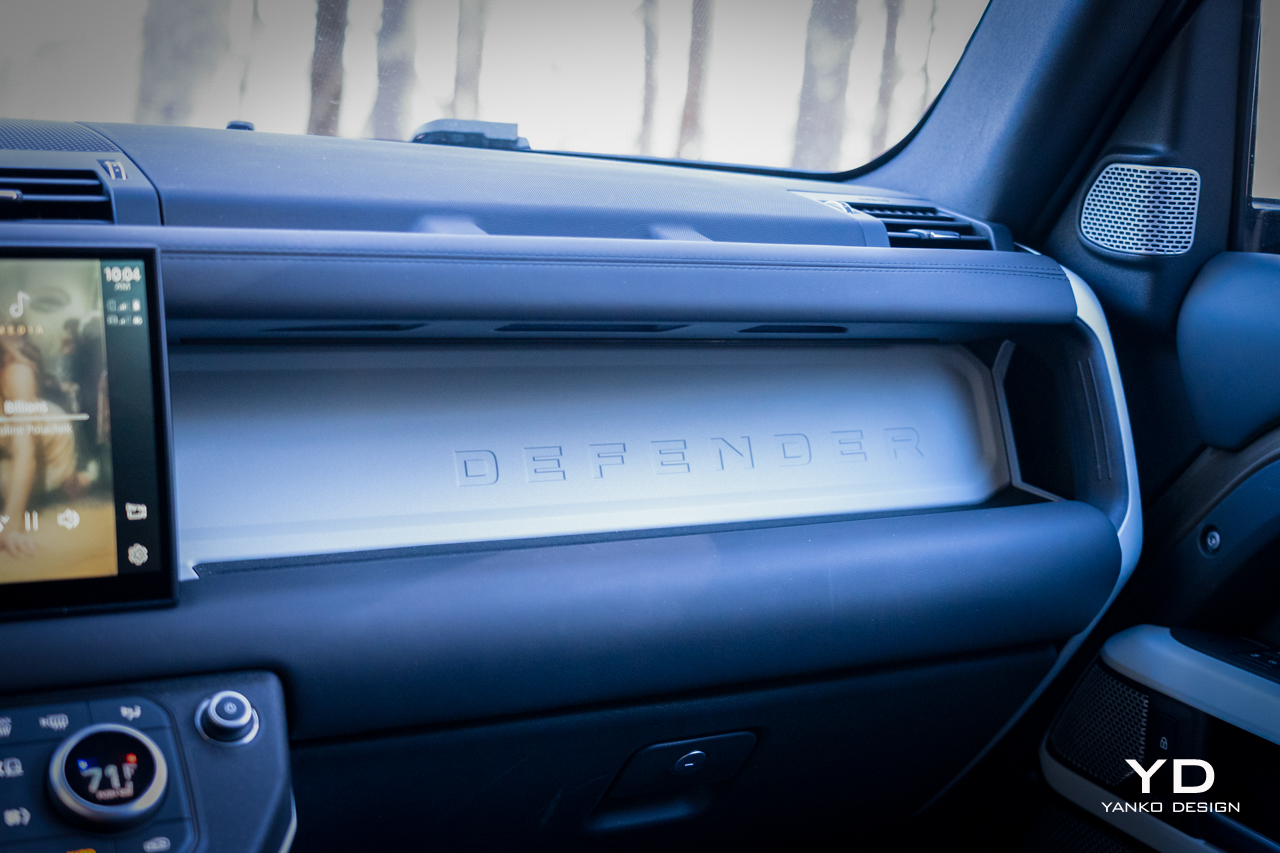
Drive modes are accessed through the left knob in the center console, which does triple-duty as the HVAC temperature knob and, with a push, also cycles seat heating and ventilation settings. Nudge the drive mode toggle and this wheel also lets you scroll (slowly) through seven different drive modes, starting with the typical Eco and Comfort then ranging into wilder stuff like Sand and Wade. Not good enough? Four separate custom Terrain Response modes await your tinkering, specifying how strong you want the engine to be, how firm you like your steering, and precisely how much wheelspin you want.
It’s perhaps a bit much, but then that’s what this thing is all about.
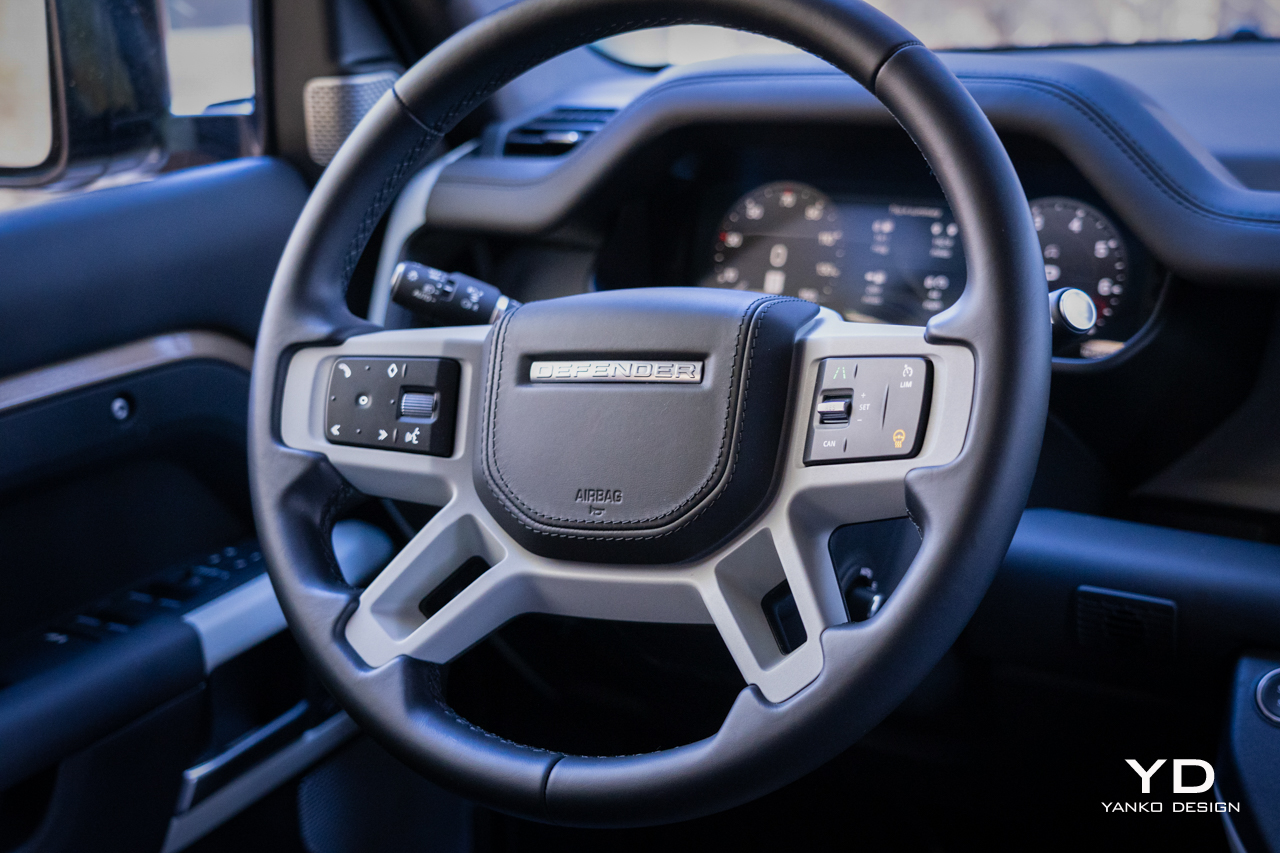
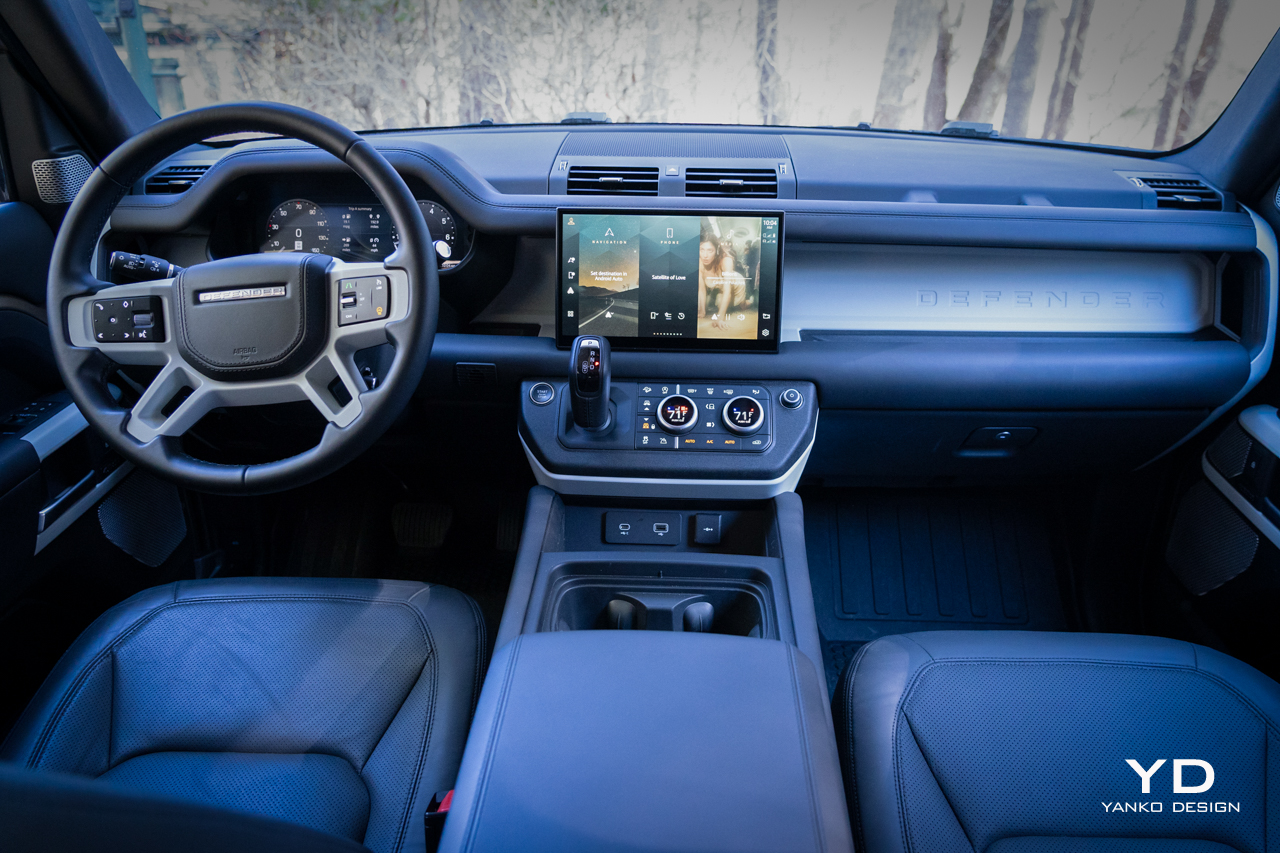
Pricing and options
If you’re looking to buy a Defender you have a lot of decisions to make. First of course is which length, with the shortest, the Defender 90, starting at $55,100. The bigger Defender 110 actually starts at a lower price $53,500, while this guy, the Defender 130, starts at $68,000 for the S model.
But, if you want the more powerful P400 engine, you’ll need to step up to the SE, which starts at $78,300, adding on some other niceties like 20-inch wheels and LED headlights. From there you have your choice of nine exterior colors, four upholstery options, and an endless configuration of interior trims and tweaks. Tick all the boxes, add on all the advanced off-road and towing features, and you’ll be into the six-figure territory.
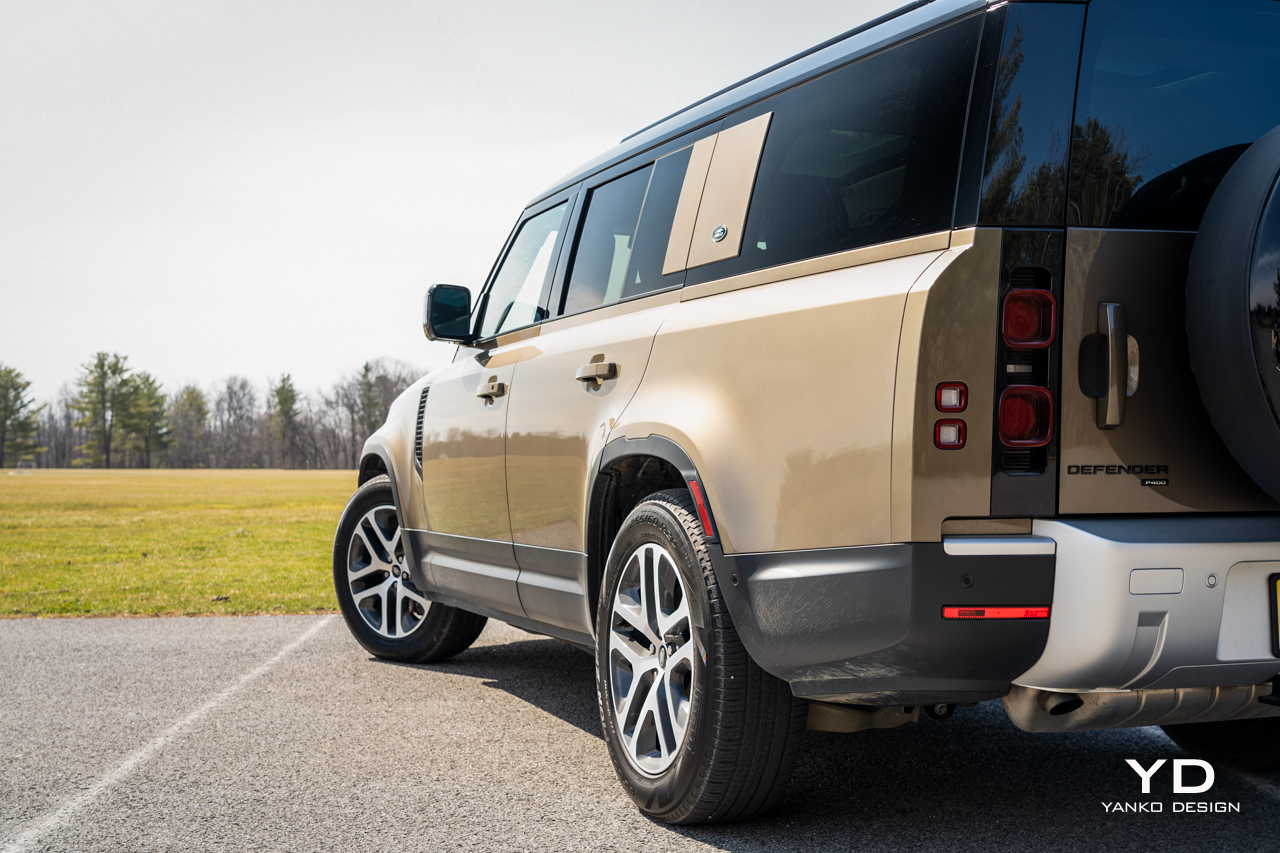
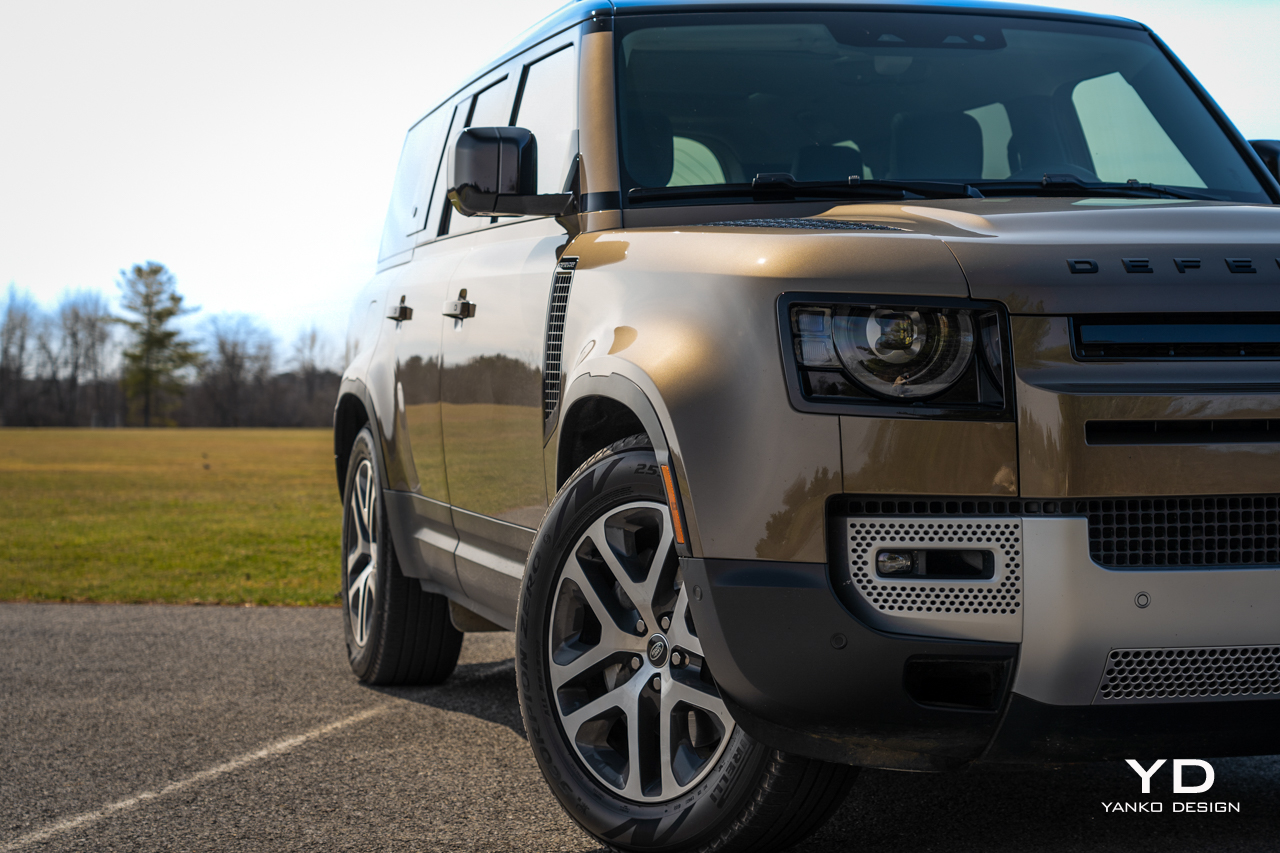
All Defenders have a comprehensive active safety package including automatic emergency braking, blind-spot monitoring, lane-keep assist, and a rear cross-traffic alert. Sadly, adding adaptive cruise costs a whopping $1,200.
This Defender SE had the $750 Advance Off-Road Capability Pack, giving those configurable drive modes, plus $1,700 in interior upgrades including those 18-way adjustable seats. $700 for the Cold Climate Pack, and another few styling options plus a $700 tow hitch receiver and $1,475 destination charge meant an $88,025 final price.
Opting for the 130 does mean making some sacrifices when it comes to on-road manners and ultimate off-road performance, but Land Rover’s biggest SUV doesn’t come up short in either department, powering through terrain that would leave many lesser SUVs stuck while carrying a full family plus dogs and cargo. It’s a mighty package, and not just because it’s so big.
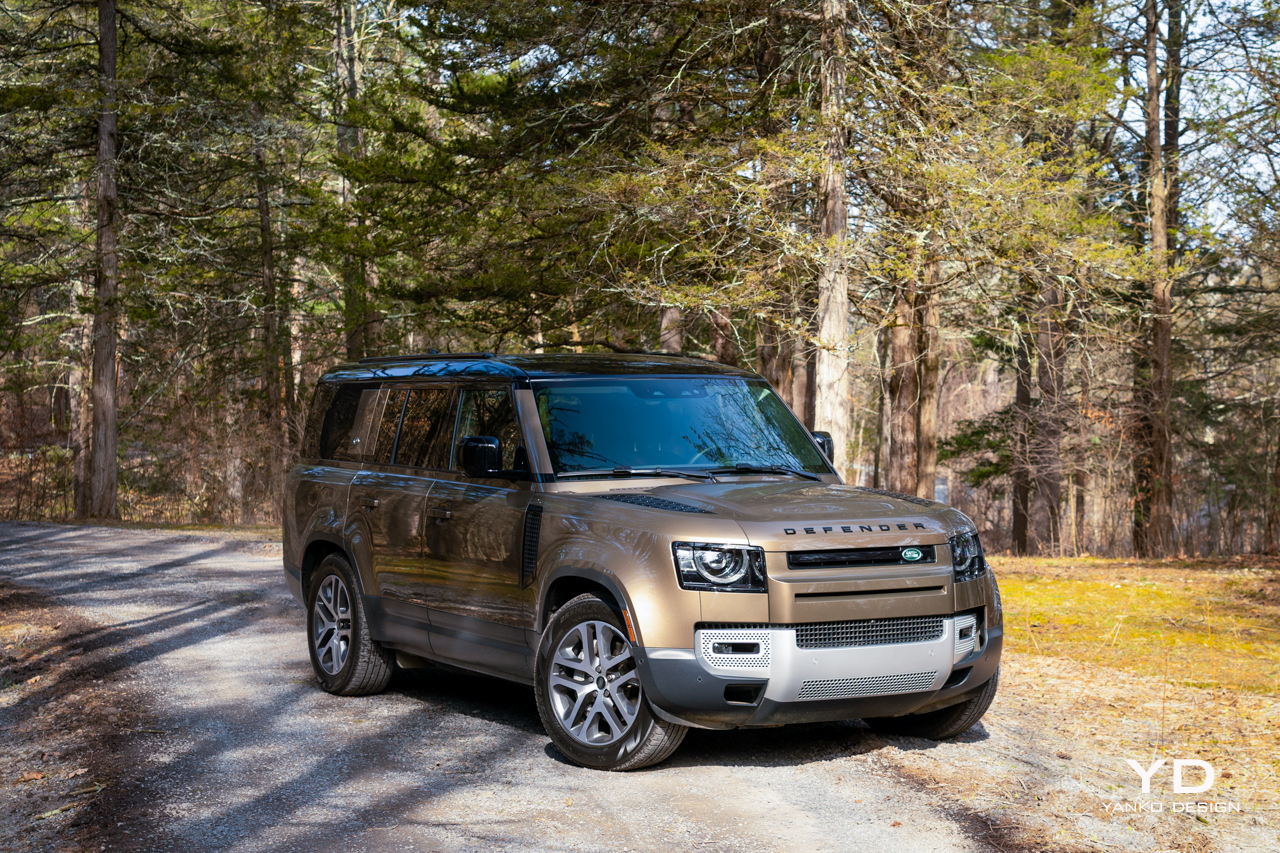
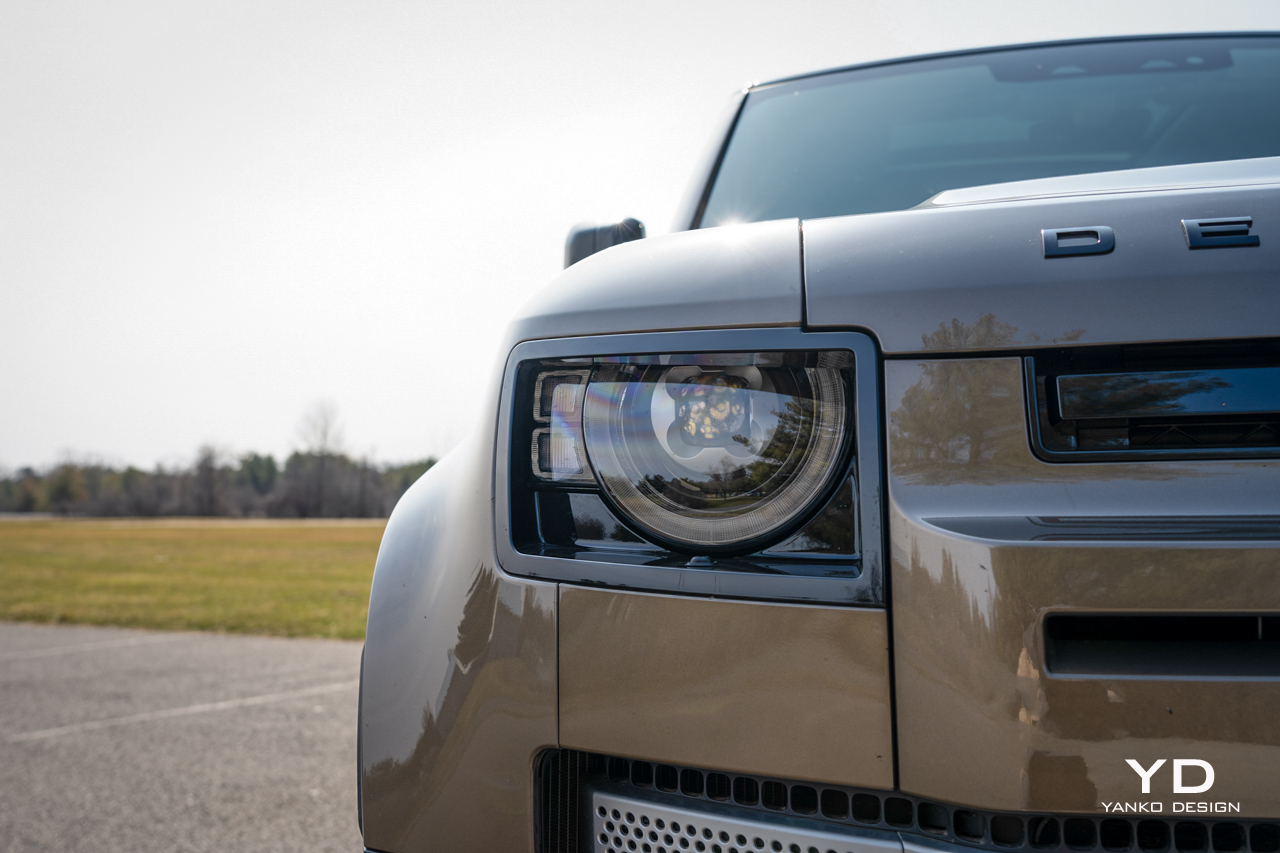
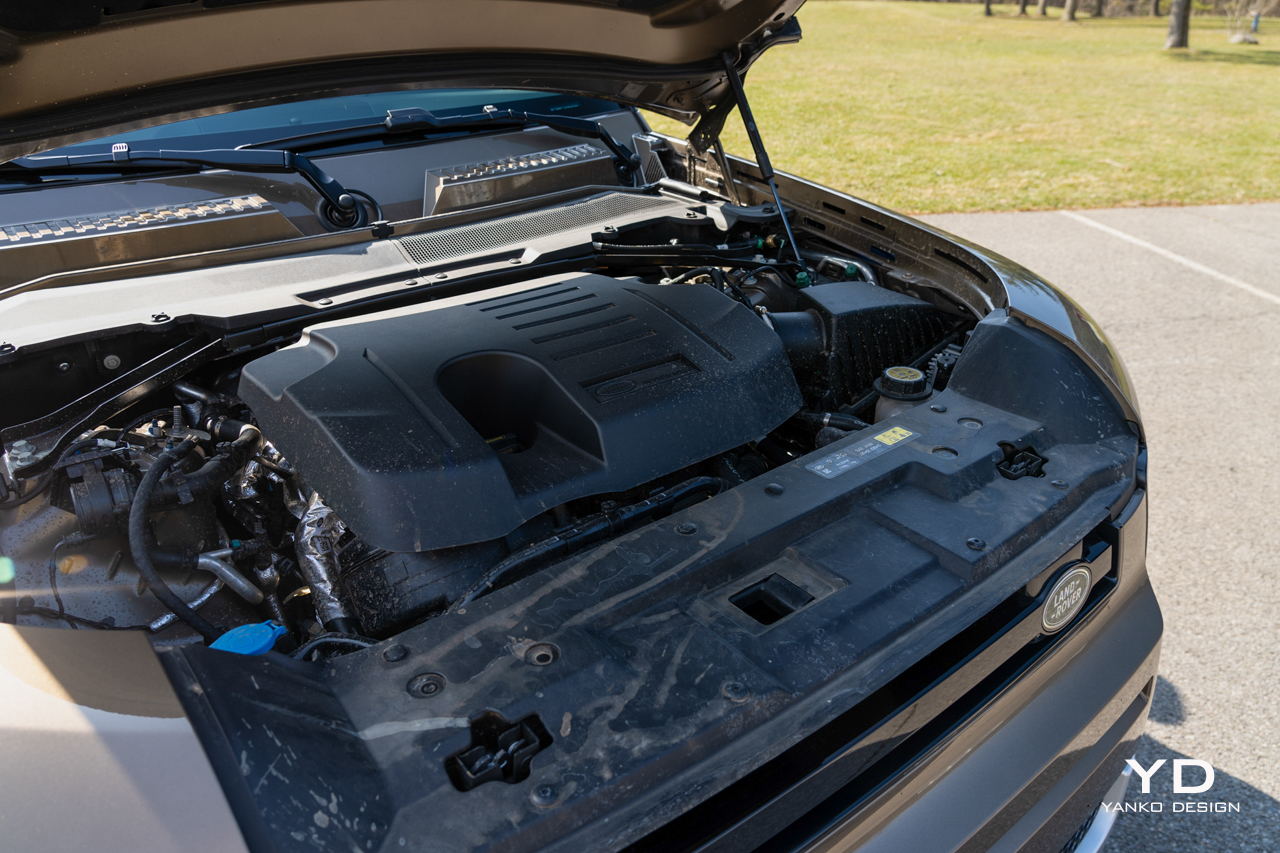
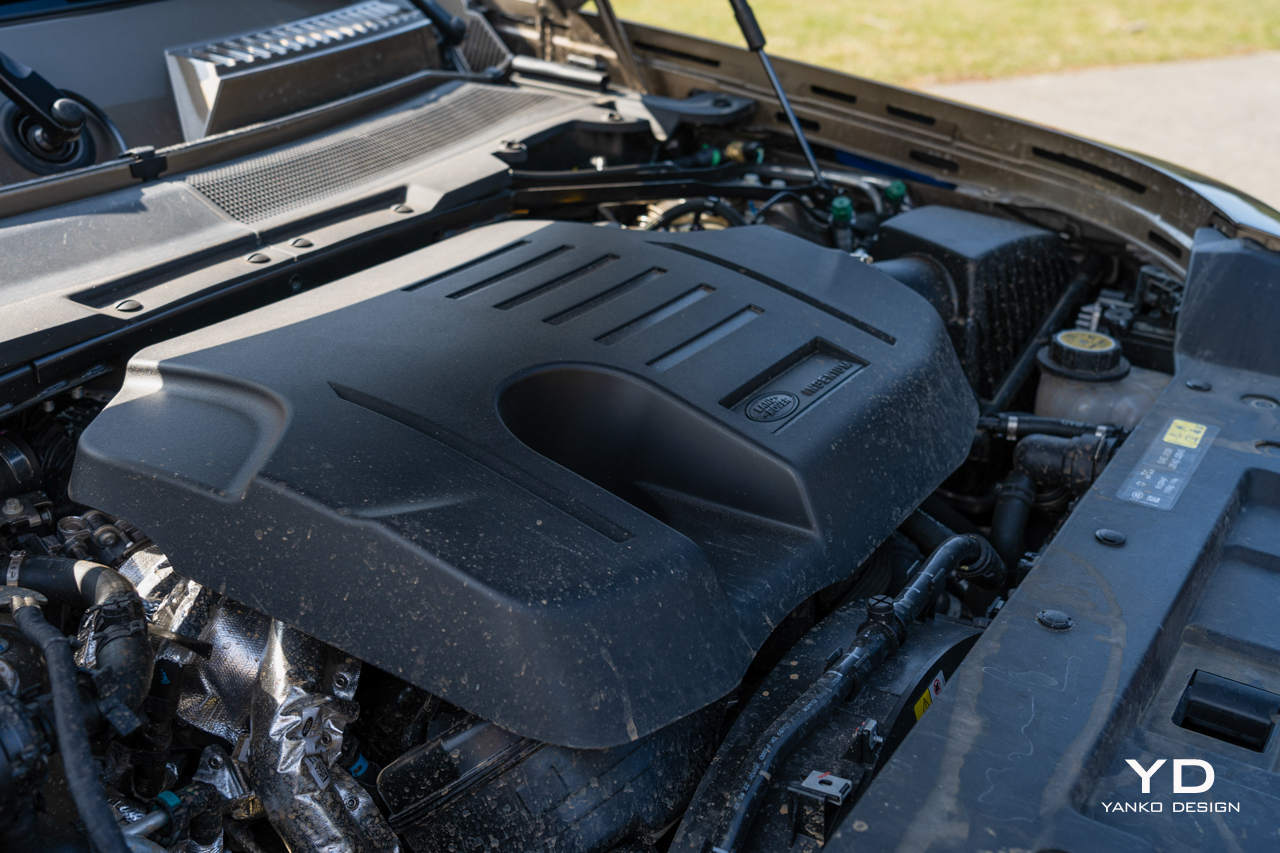
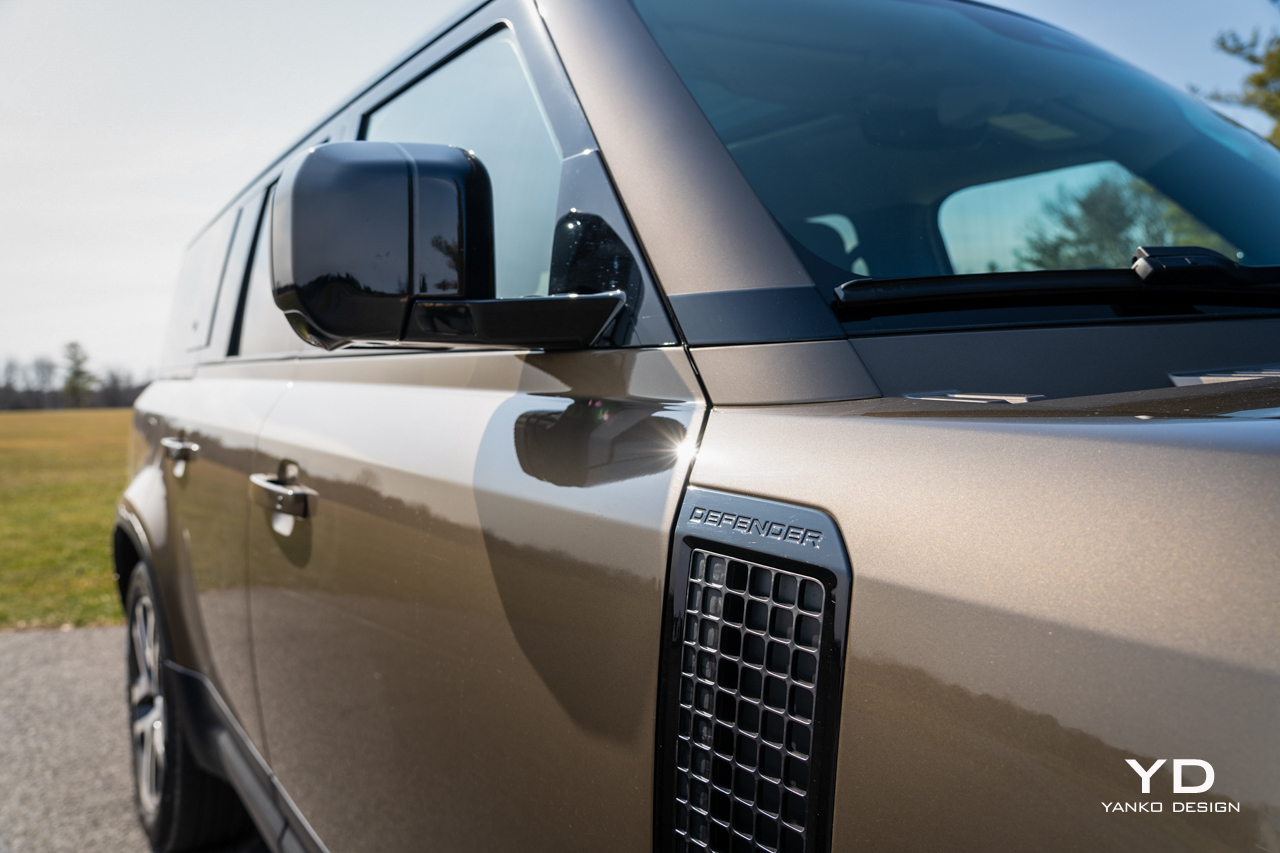
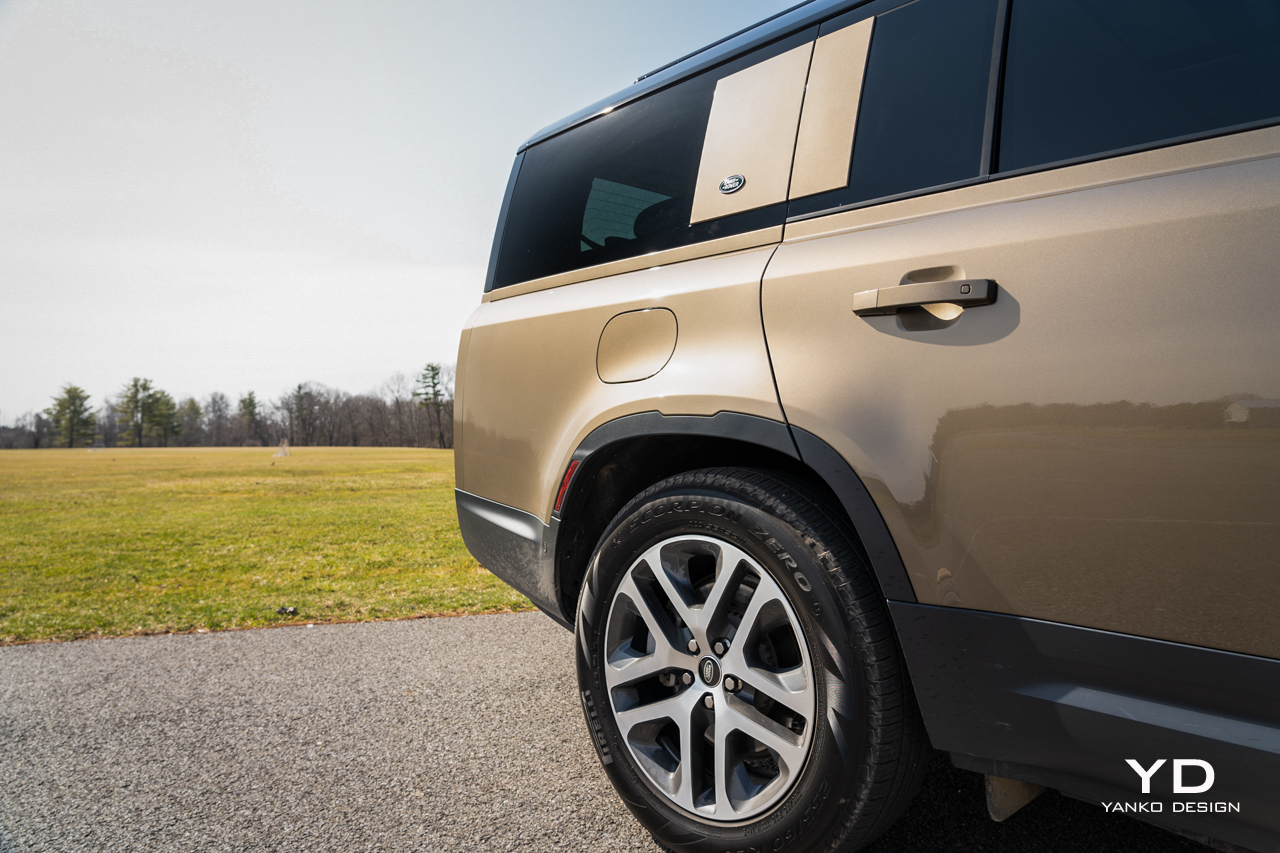
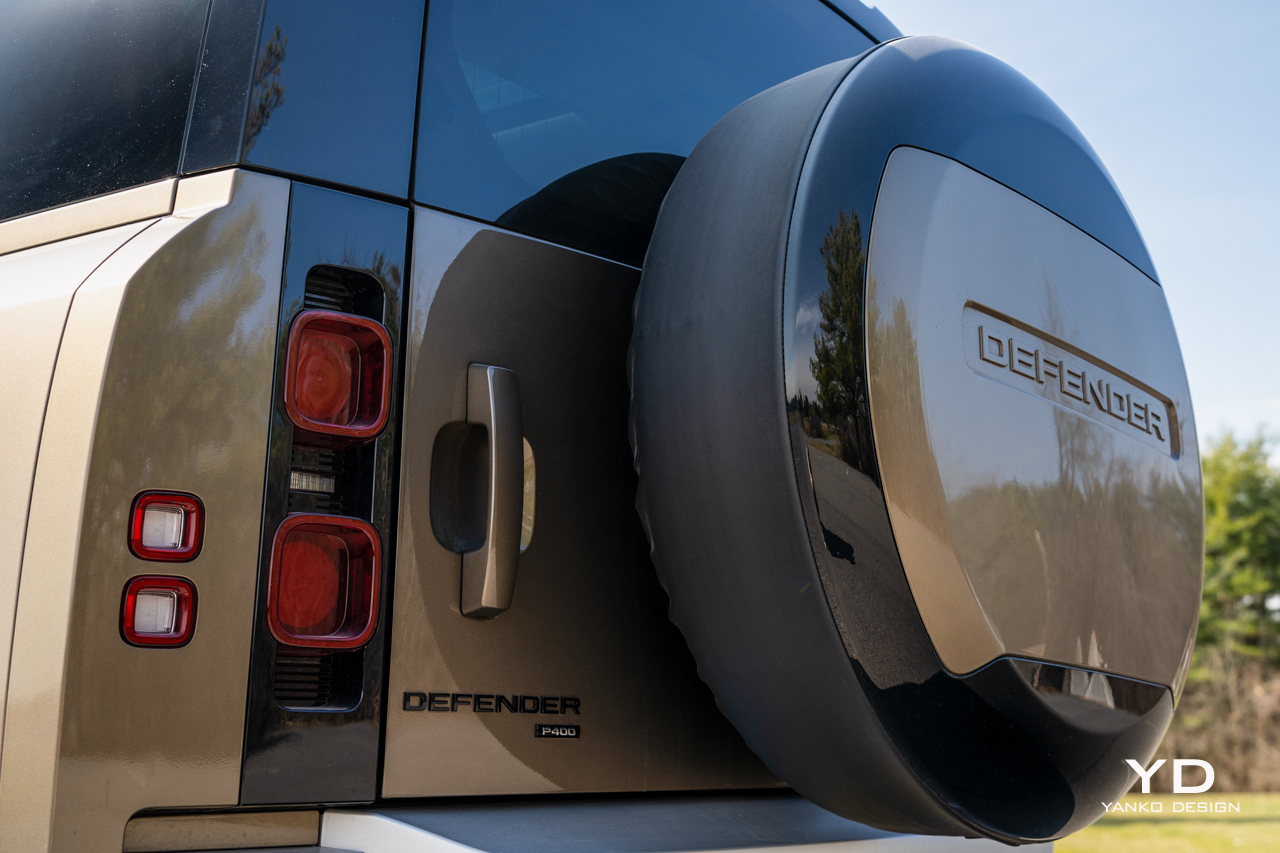
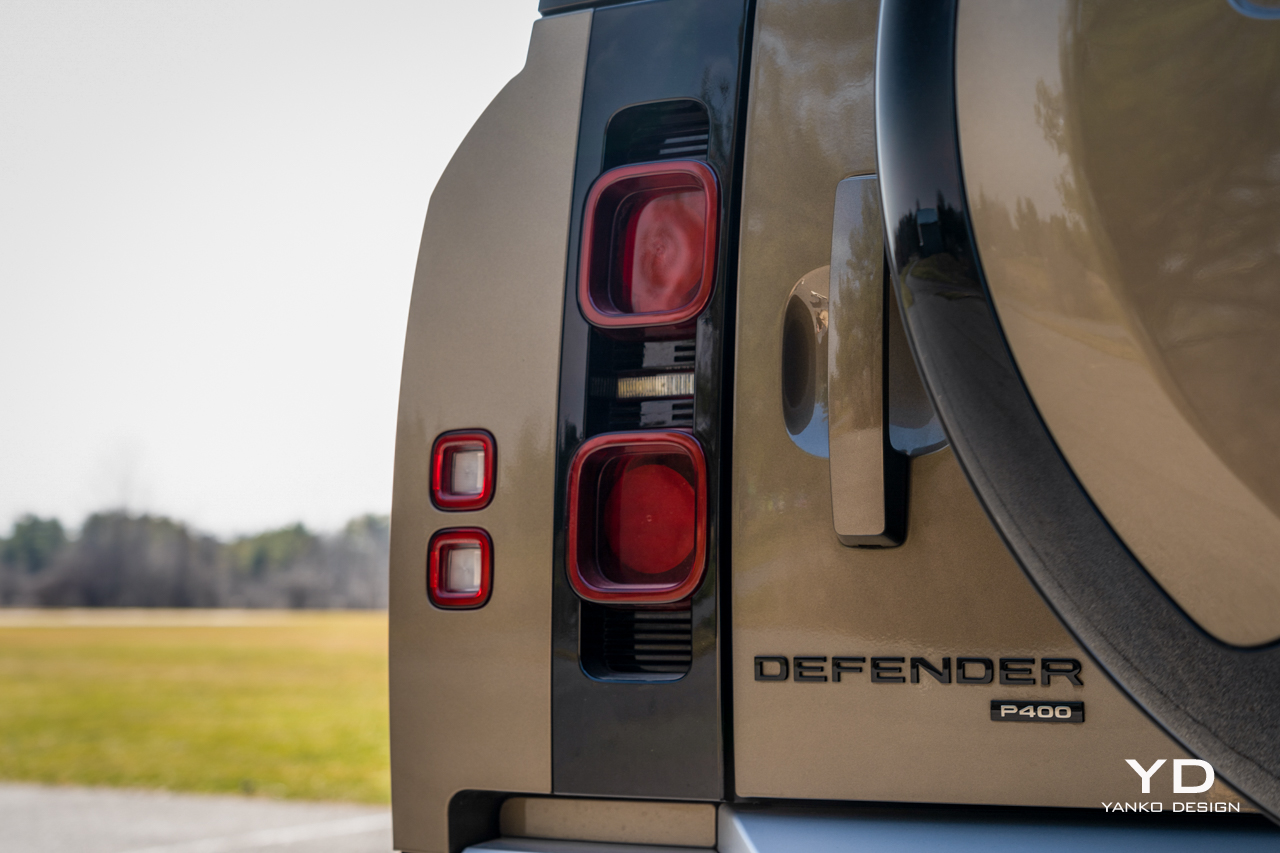
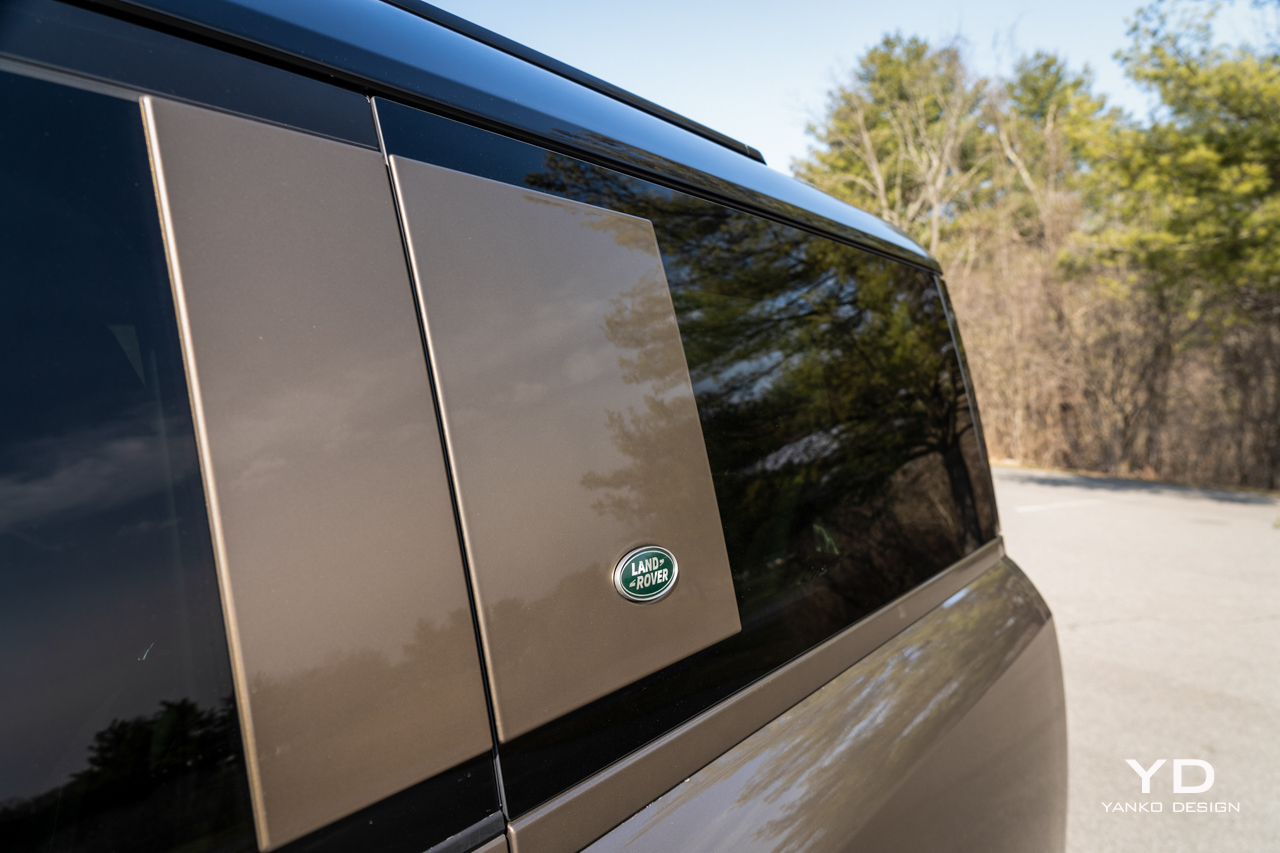
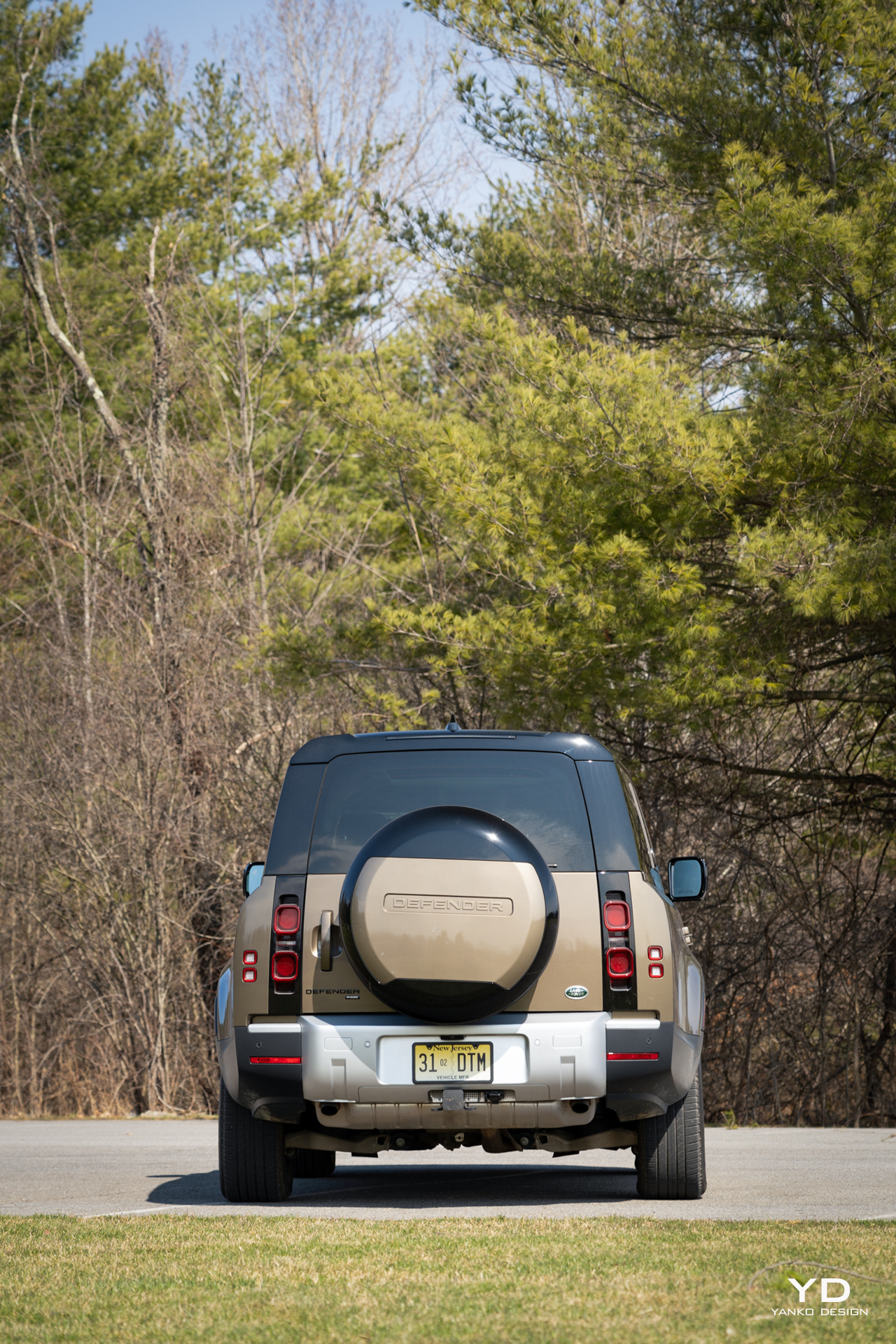
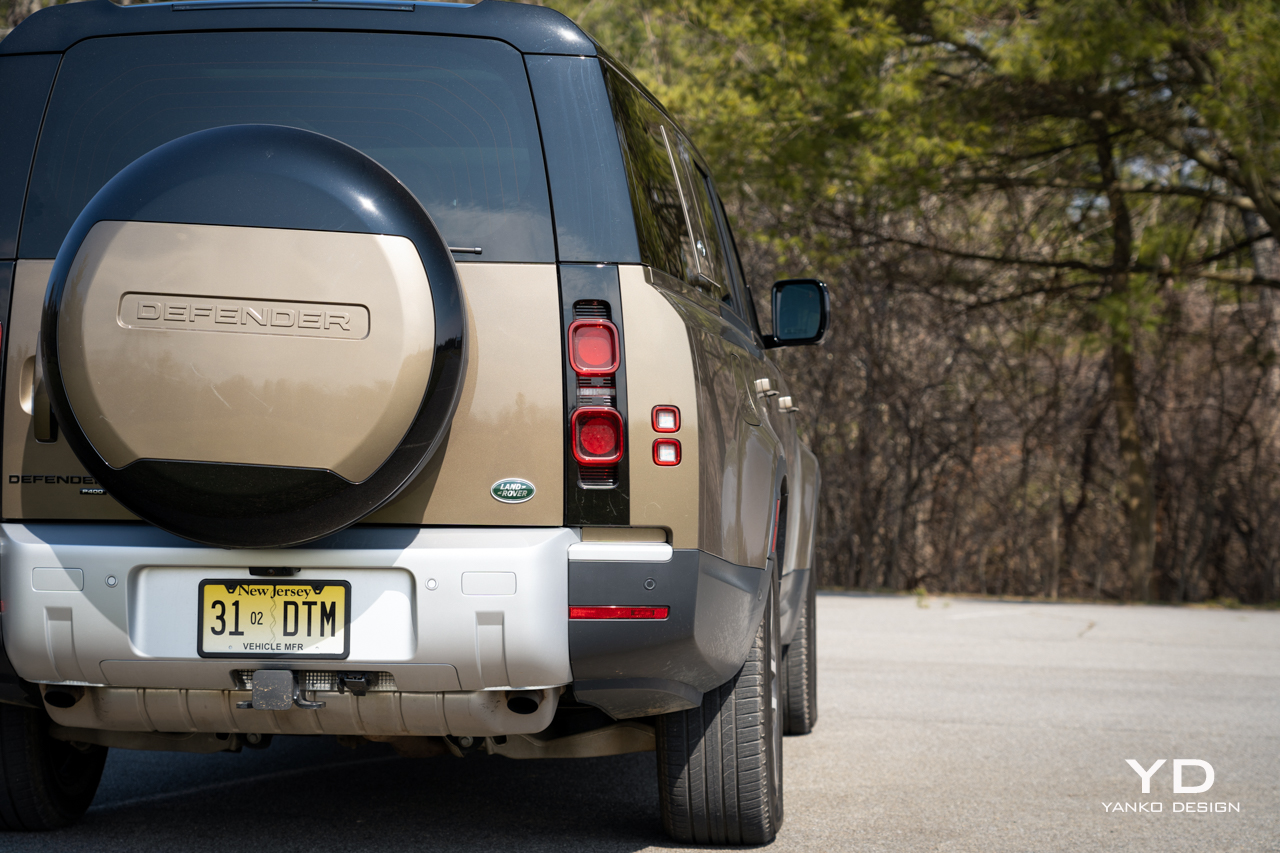
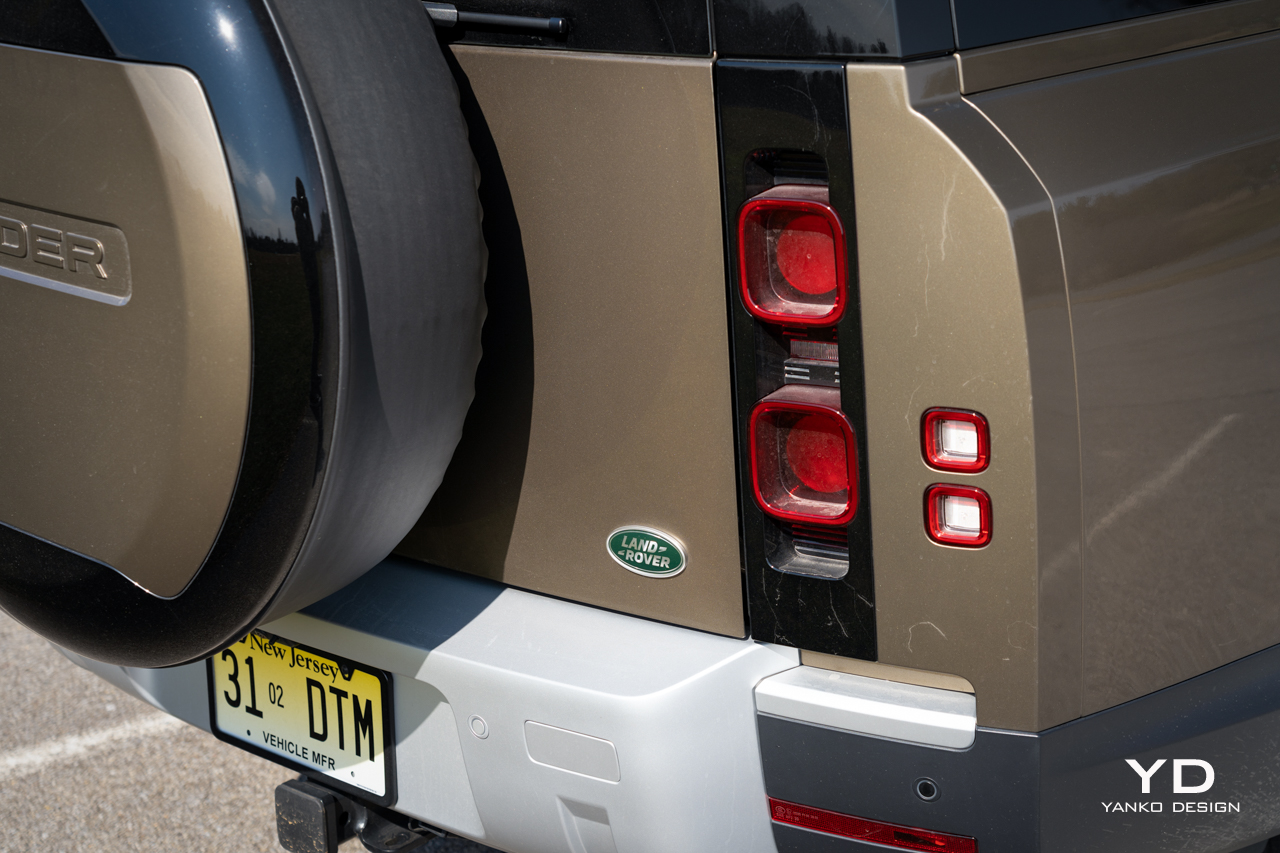
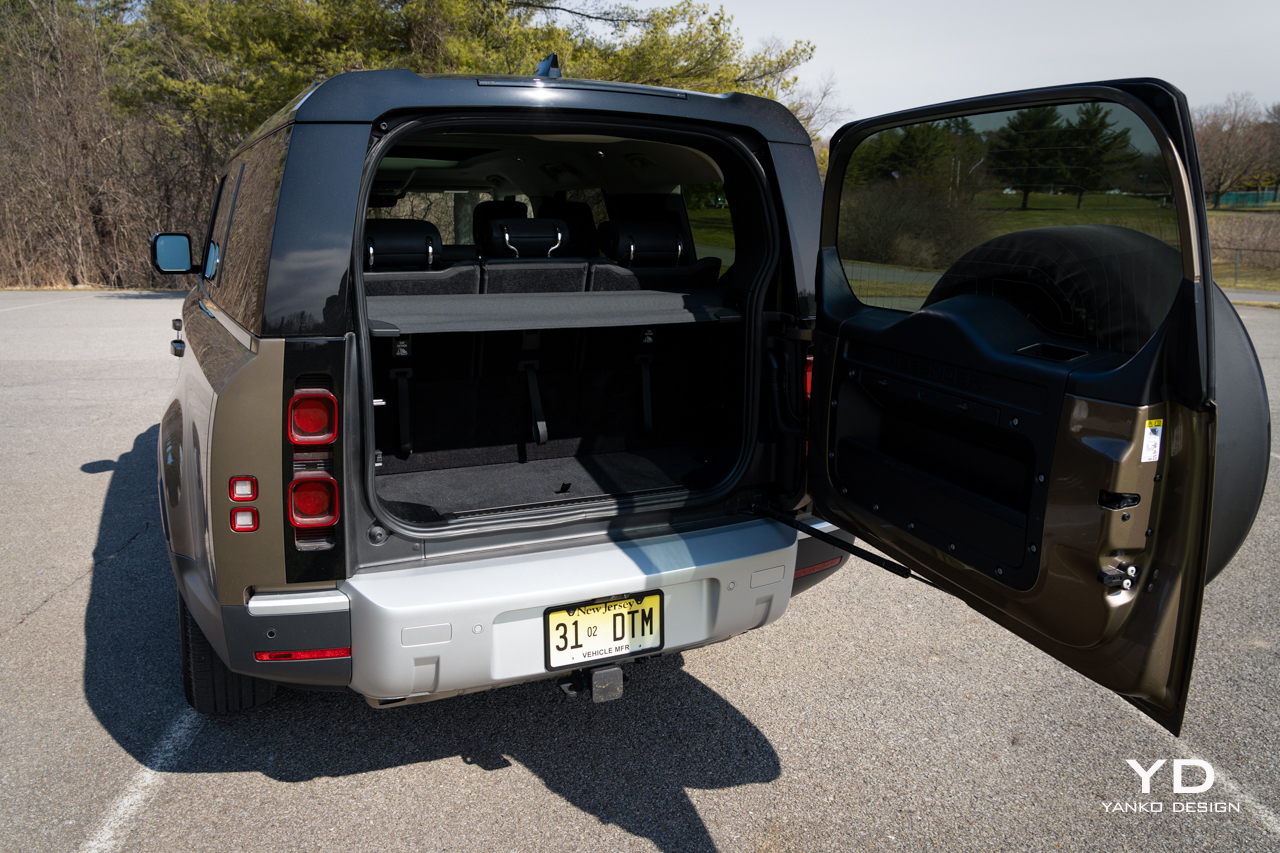
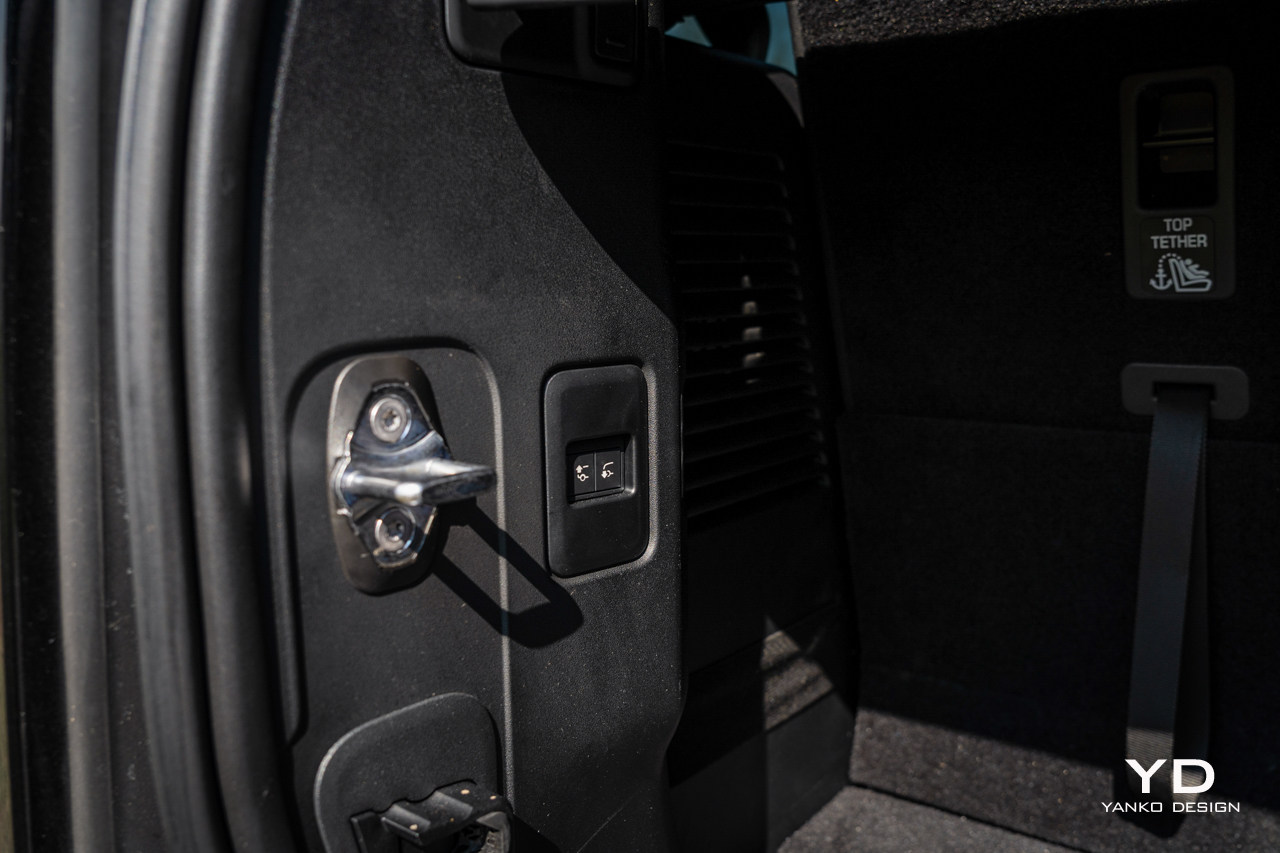
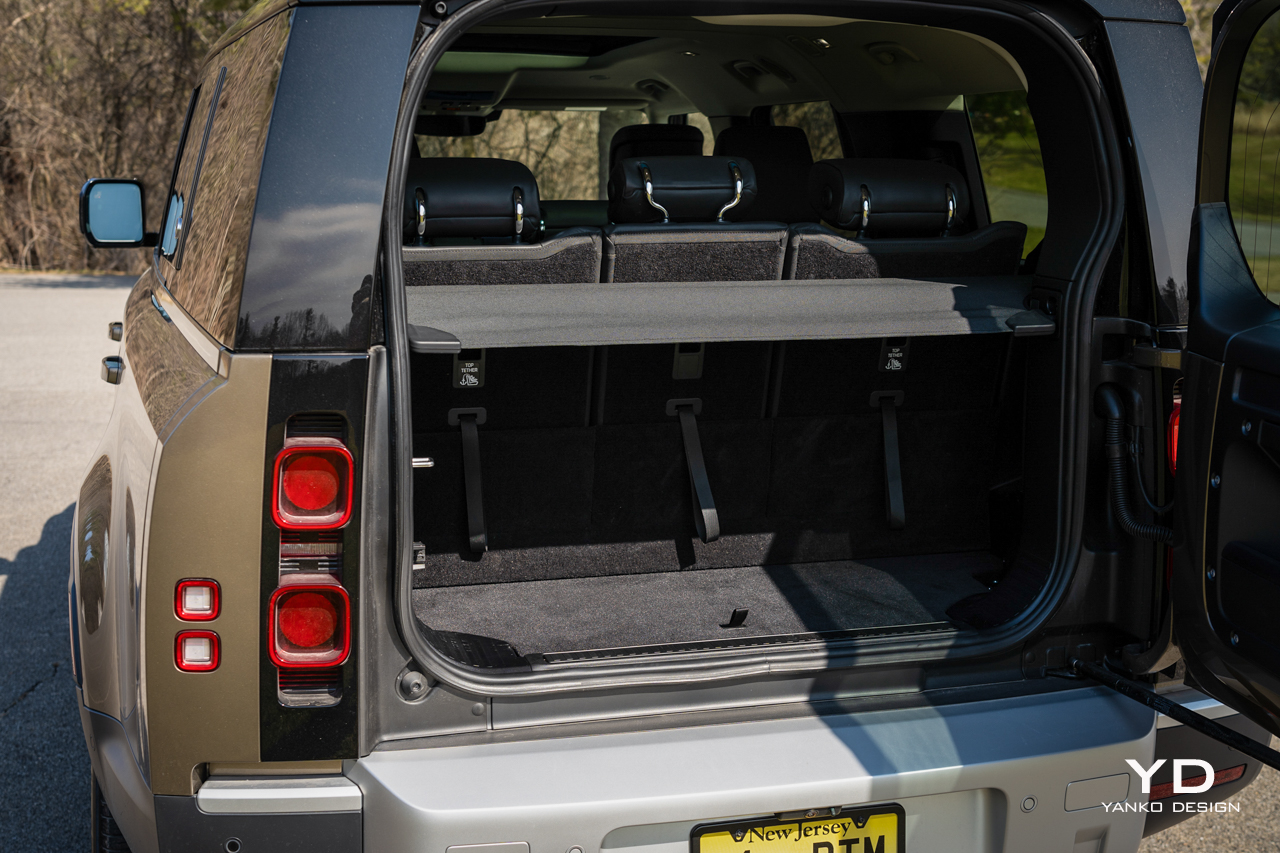
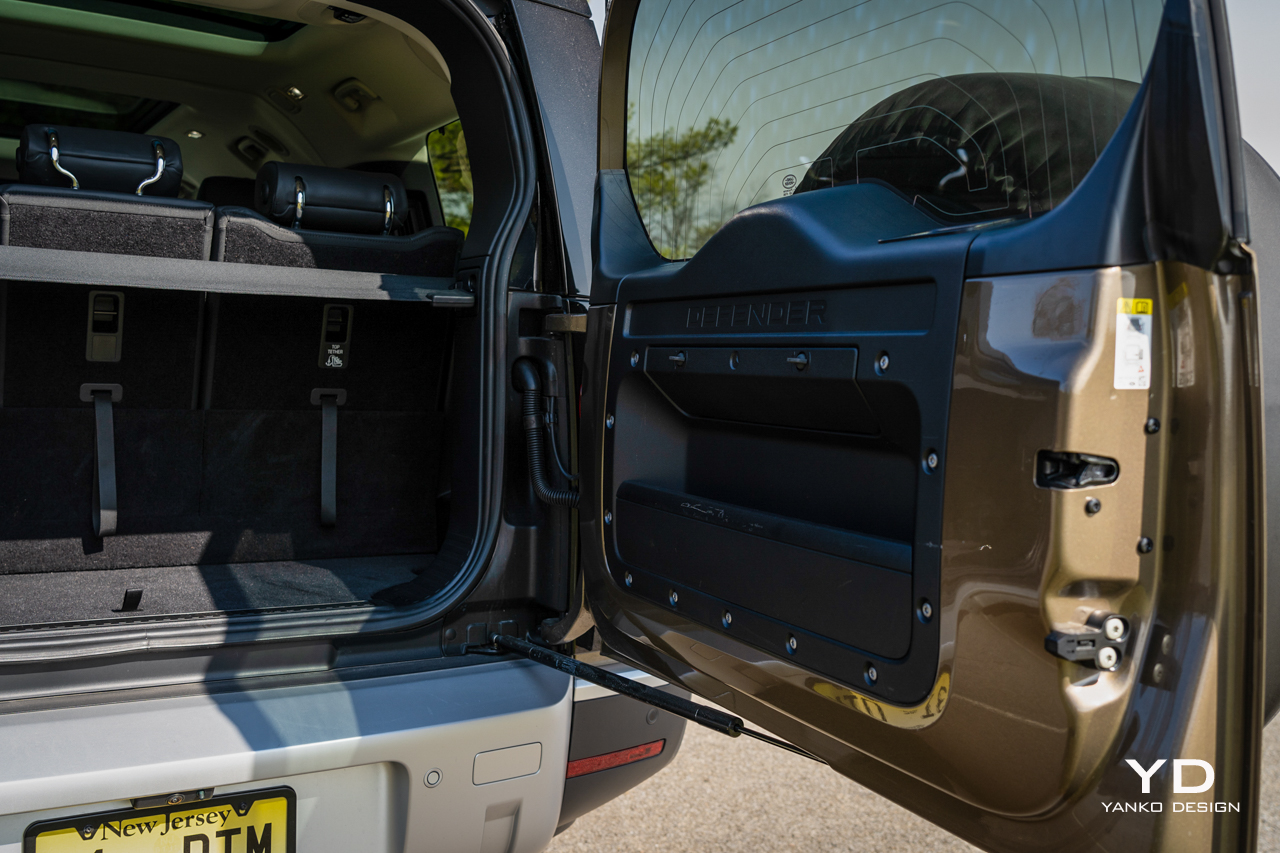
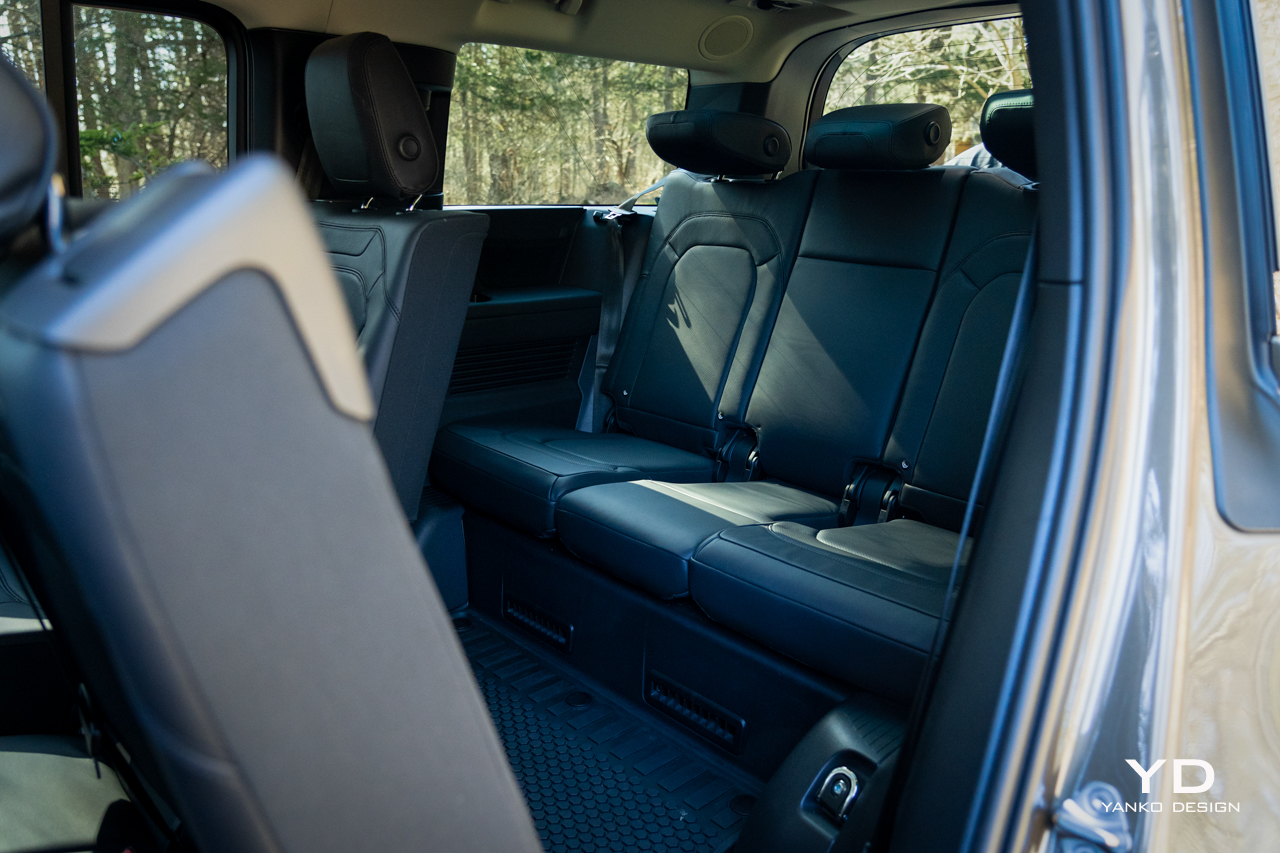
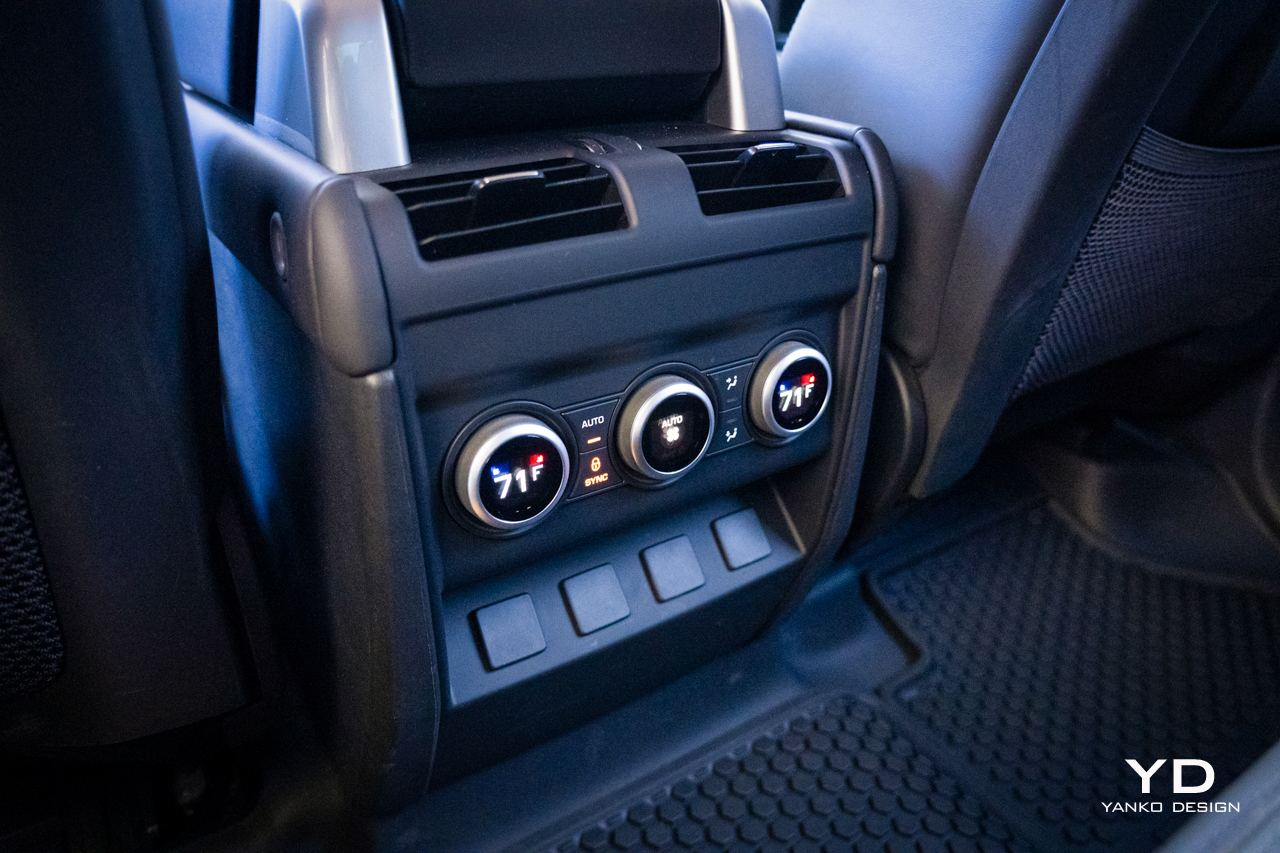
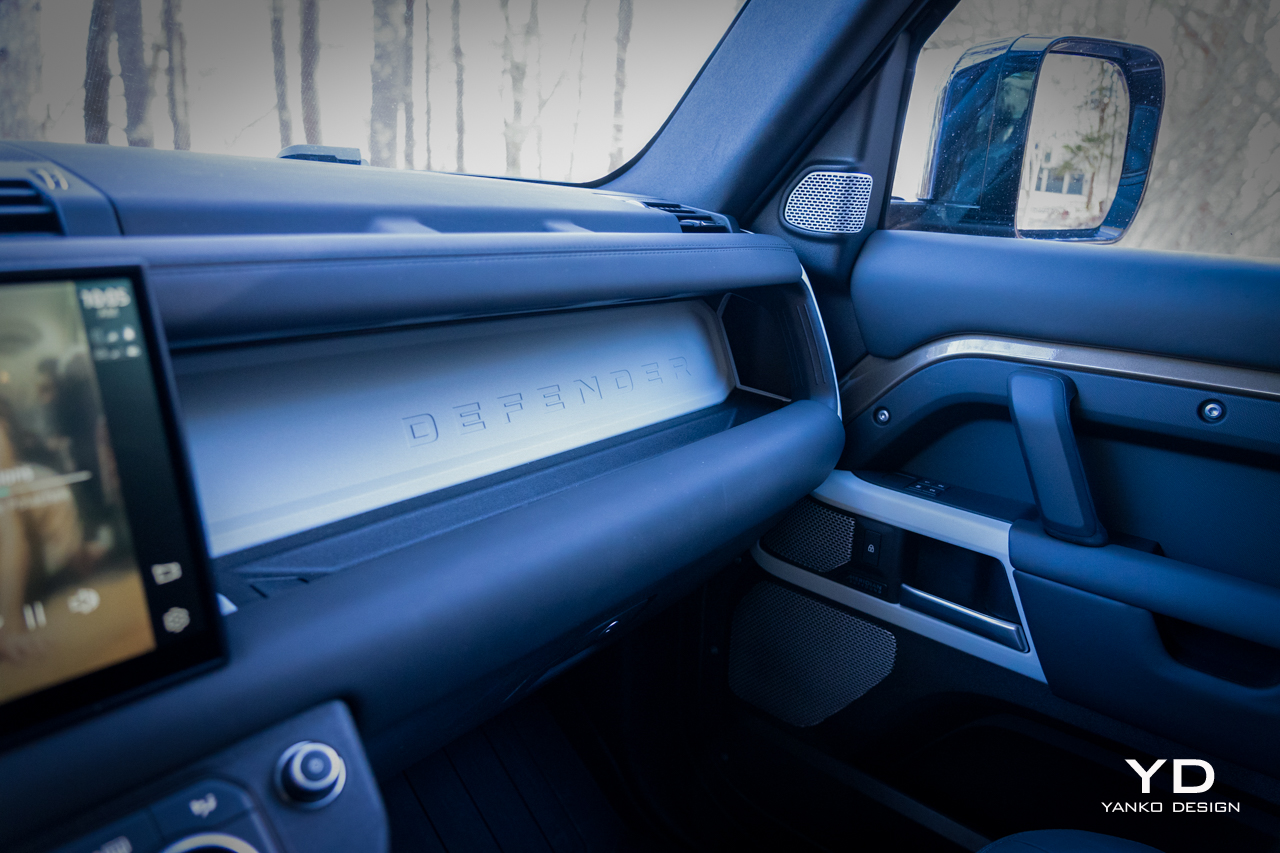
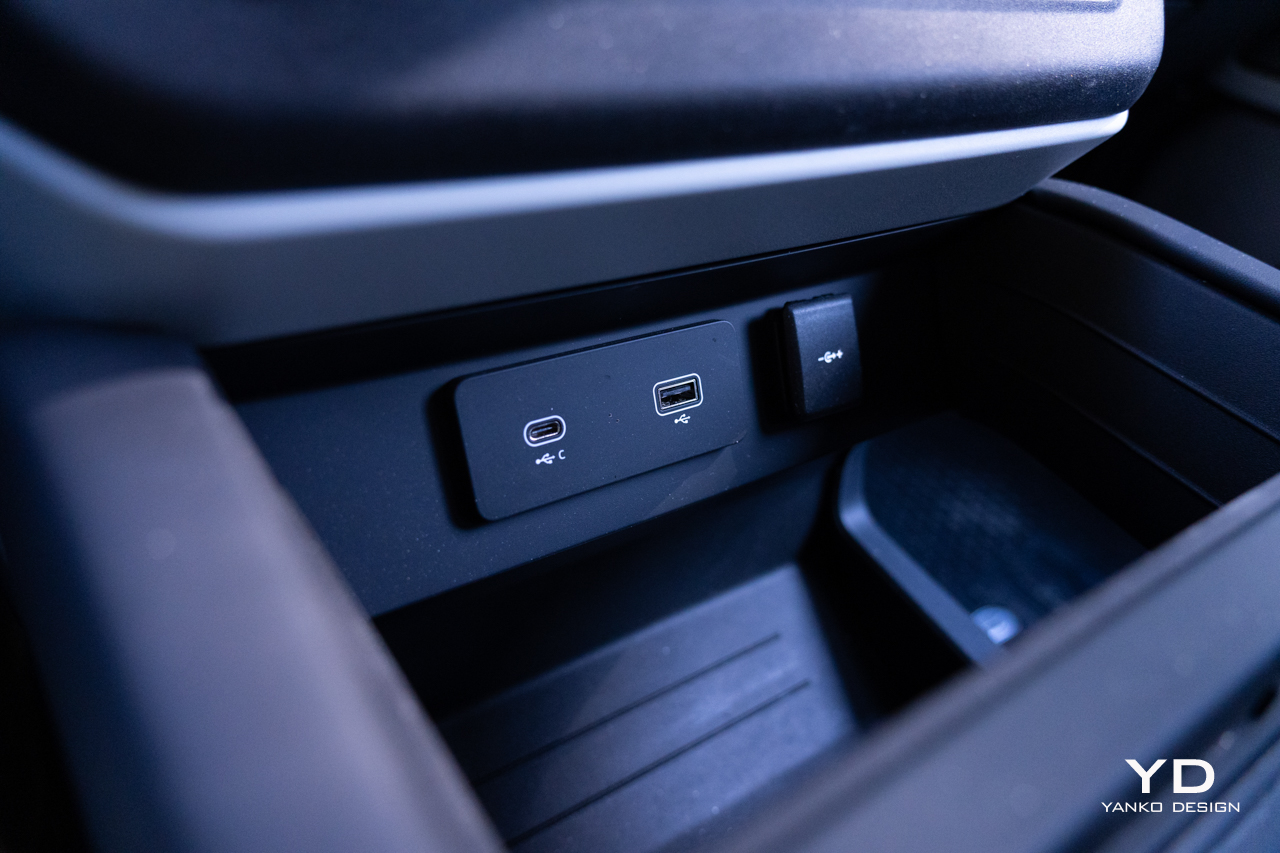
The post 2023 Land Rover Defender 130 Review first appeared on Yanko Design.
